28 Great Places to Retire Near the Beach
The mix of retirement cities is sure to surprise you.

Erin Bendig

The lapping waves. The majestic views. The vitamin D. Who can resist the siren song of life at the beach — and why would you want to? A growing body of research is confirming that waterfront living is good for you. Studies have found that closer proximity and more frequent visits to bodies of water correlate to higher reports of wellness, in terms of both physical and mental health. Plus, the increased opportunity for physical outdoor activity — whether it be walking the shores, paddling the surface, or diving into the deep — also offers proven health benefits. And while the ocean may be the natural go-to for those seeking water-related therapy, studies show that any so-called blue space — a term for any aquatic feature including lakes and rivers — can help boost your well-being.
So even if you can't quite afford a pricey oceanfront home for your retirement, you can still enjoy the benefits of retiring to a beach in hotspots all across America. Even in the Heartland, far from the coast, many U.S. locales offer access to freshwater beaches on lakes and rivers.
We pinpointed a great place to retire in each state, taking into account living costs, safety, median incomes and poverty rates for retirement-age residents, as well as residents' sense of well-being and the availability of recreational and health care facilities. Of our 50 picks, 28 choice retirement destinations offer the added benefit of nearby beaches, within a 30-minute drive, where you can swim and bum around. The mix of retirement cities is sure to surprise you.
The list is ordered alphabetically by state. See "How We Picked the Best Places for Retirement" at the end of the list for details on our data sources and methodology.
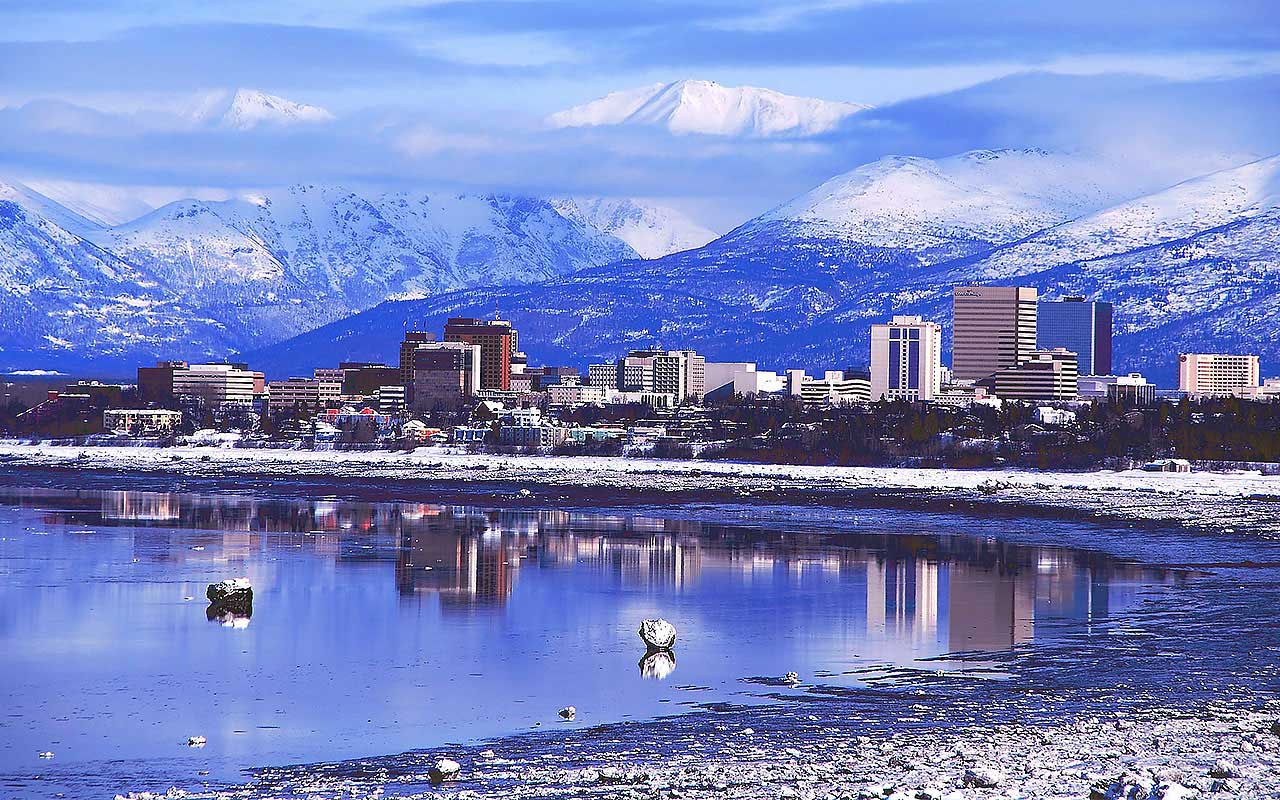
Anchorage, Alaska
- City population: 286,075
- Share of population 65+: 12.8%
- Cost of living: 26.4% above the national average
- Median household income: $95,731
- Alaska state tax guide
- Popular local beaches: Kincaid Park, Goose Lake Park, Mirror Lake Park, Point Woronzof, Jewell Lake and Little Campbell Lake
The Last Frontier might be the last place you'd think of for a beachfront retirement. But Anchorage does experience hot summer days, and you can find plenty of beaches around to enjoy them. Among the choices are Goose Lake Park, Jewell Lake and Little Campbell Lake, as well as the sweeping beach at Kincaid Park.
To get you through the rest of the year, including the long winters, it pays to live in Alaska. Literally. A state fund fueled by oil wealth gives all permanent residents an annual dividend. The 2023 Permanent Fund Dividend amount was $1,312.
And residents could certainly use the extra cash. Living costs throughout Alaska are significantly higher than is typical across the continental U.S. However, being the largest city in Alaska, Anchorage offers more amenities than other parts of the state, including numerous theaters, museums and health care facilities, on top of all the outdoor recreation you'd expect. Plus, Alaska made our list of the 10 Most Tax-Friendly States for Retirees.
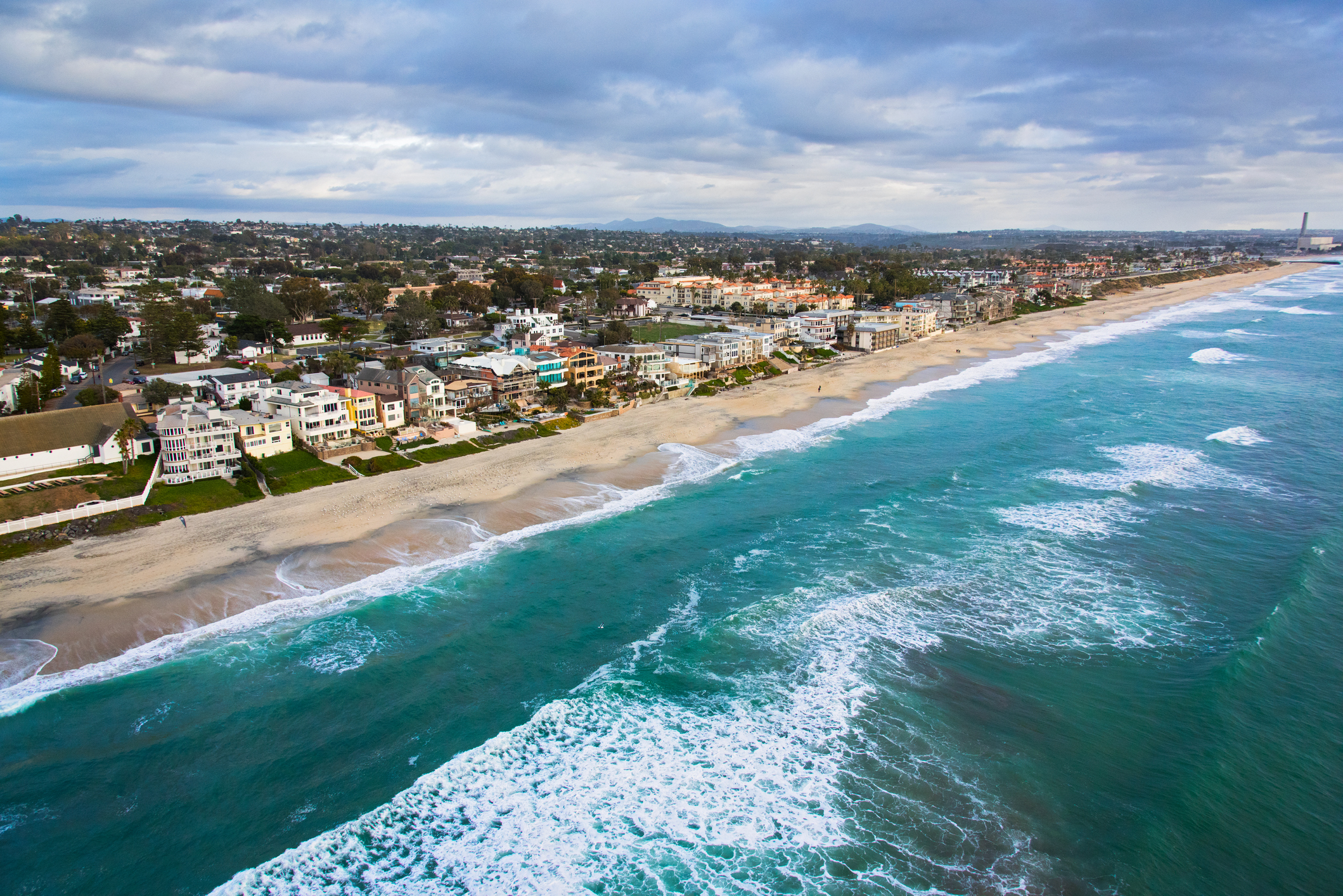
Carlsbad, California
- City population: 114,160
- Share of population 65+: 17.8%
- Cost of living: 41.7% above the national average
- Median household income: $134,139
- California state tax guide
- Popular local beaches: North Carlsbad Beach, Terramar Beach, Tamarack State Beach and South Ponto Beach
Part of the San Diego metro area, Carlsbad offers a small-city feel with easy access to big-city amenities. Located alongside seven miles of Pacific Ocean coastline, you can find 14 community parks, more than 60 miles of hiking trails and a full calendar of artsy offerings, including International & Independent Film Fridays in the spring and free concerts in the summer.
Not that there are really seasons in Carlsbad. Throughout the year, average highs fall between 63 and 73 degrees Fahrenheit, and average lows only go down to between 45 and 64 degrees Fahrenheit, according to NOAA. And rainy days are rare. Plus, you can choose among a host of retirement communities with ocean views.
Of course, you have to be able to afford it. Like much of California — where living costs are 38% above the national average — Carlsbad and the whole metro area is a pricey place to live. For example, the average home value in the U.S. is $347,716, according to Zillow; in California, it's $765,197; and in Carlsbad, it's (brace yourself) $1,488,066. And high taxes throughout Cali also weigh heavily on your wallet.
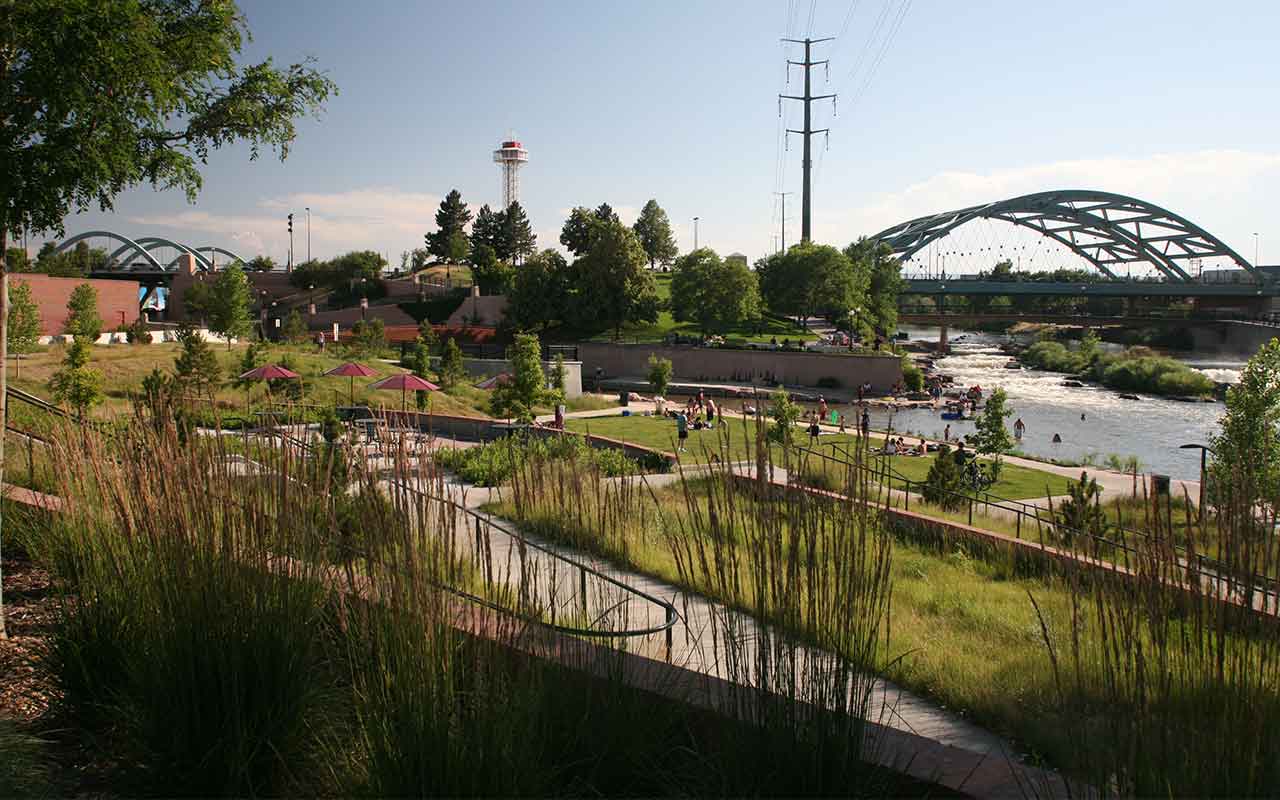
Denver, Colorado
- City population: 713,252
- Share of population 65+: 12.0%
- Cost of living: 8.8% above the national average
- Median household income: $85,853
- Colorado state tax guide
- Popular local beaches: Confluence Park beach
Denver actually has a bit of beach downtown at Confluence Park, where Cherry Creek and South Platte River meet. You can also check out the beaches at Aurora's Cherry Creek State Park and at the reservoirs in Aurora and Boulder — all within a 30-mile radius of Denver. The local beaches and other outdoor amenities help encourage a healthy lifestyle. In the United Health Foundation's 2023 senior health rankings, Colorado was ranked as the third healthiest states for older adults.
Other strengths of the area include high employment and economic stability, as well as quality infrastructure, with well-funded transit for older adults, highly rated nursing homes and ample continuing care.
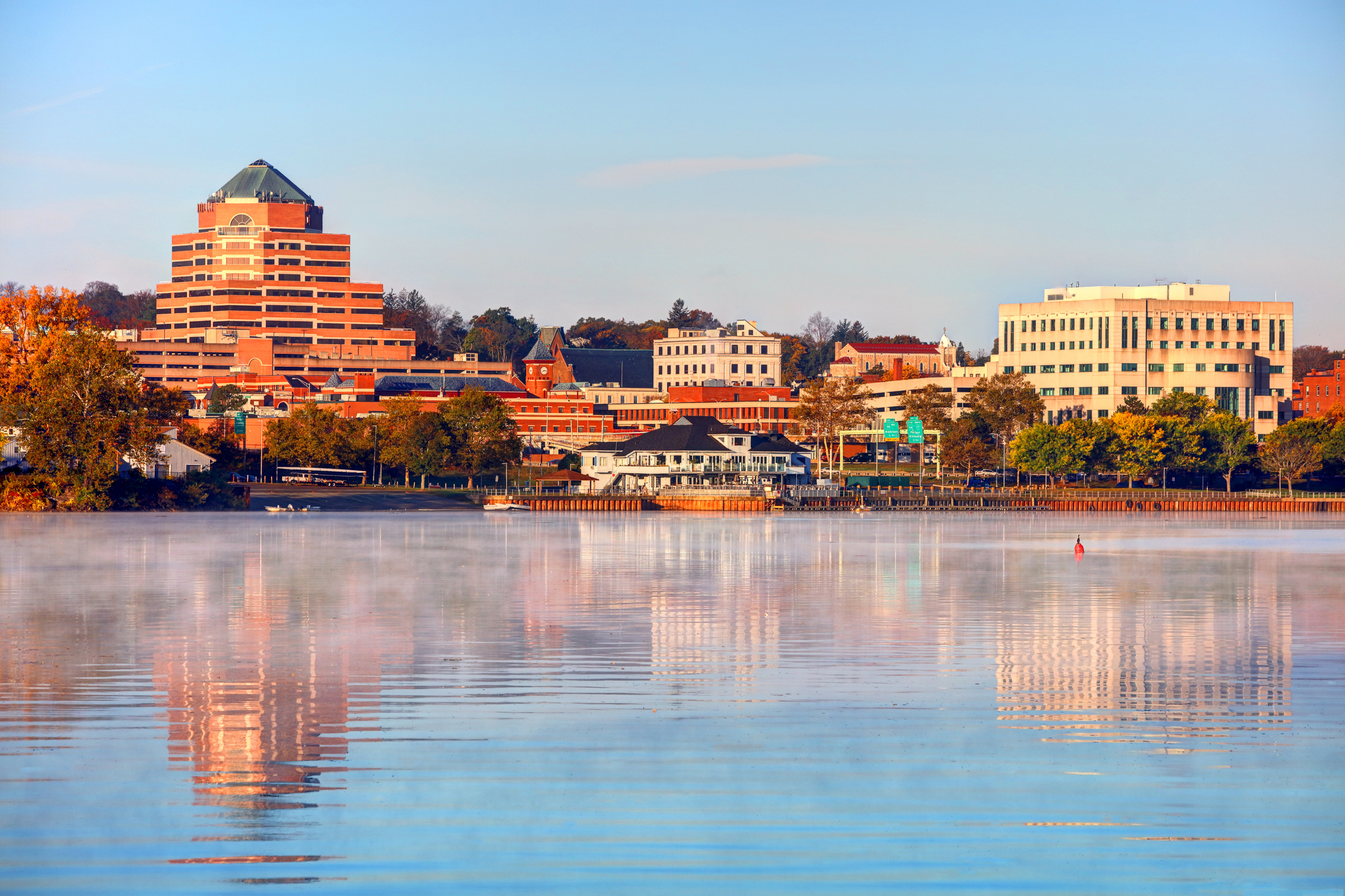
Middletown, Connecticut
- City population: 48,729
- Share of population 65+: 15.5%
- Cost of living: 4.5% above the national average*
- Median household income: $75,120
- Connecticut state tax guide
- Popular local beaches: Wadsworth Falls State Park, Harvey's Beach and Sound View Beach
This small city, part of the Hartford metro area, is about 25 miles from the Long Island Sound and within an hour of many of the area's most popular beaches. And depending on the route you take (and how fast you drive), you can get from Middletown to Sound View Beach in Old Lyme or Harvey's Beach in Old Saybrook within about 30 minutes. Even closer: in town, along the Coginchaug River, you can visit Wadsworth Falls State Park, where there's about 300 feet of beach on a freshwater pond, along with five miles of trails and the park's eponymous waterfall.
Plus, being home to Wesleyan University, Middletown offers all the benefits of retiring to a college town, including numerous restaurants, shops and cultural attractions. You can also take advantage of the Wesleyan Institute for Lifelong Learning, which offers no-credit courses, lectures and other educational opportunities at minimal cost and is open to the entire community.
Note: While the nearby city of Hartford has an alarmingly high crime rate, with 5.68 violent crimes per 1,000 residents (according to Neighborhood Scout), Middletown is far safer with a mere 0.99 violent crimes per 1,000 residents.
*Data for the Hartford metropolitan statistical area, which includes Middletown.
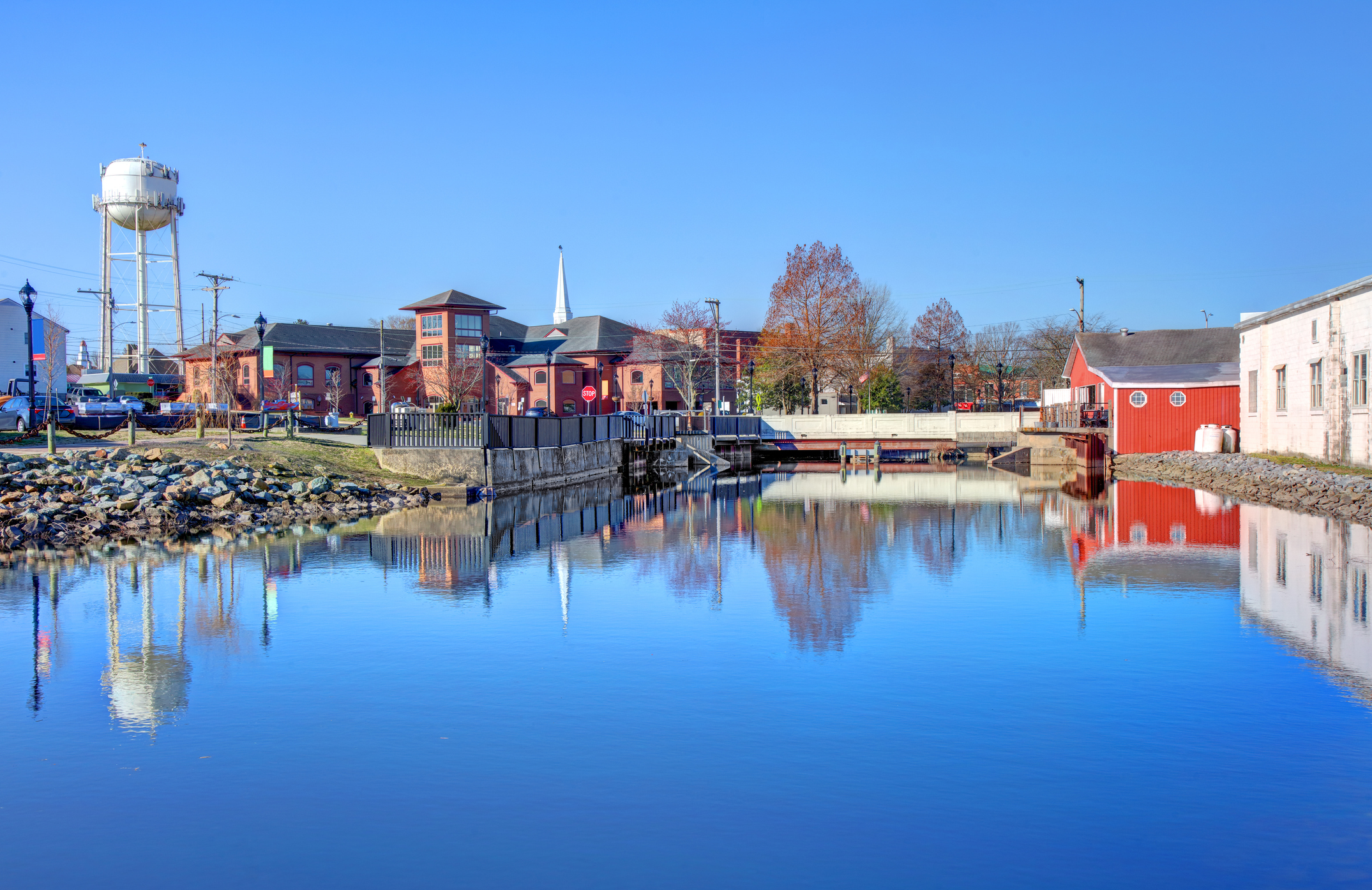
Milford, Delaware
- City population: 12,981
- Share of population 65+: 24.1%
- Cost of living: 8.0% above the national average*
- Median household income: $53,472
- Delaware state tax guide
- Popular local beaches: Slaughter Beach
If you're thinking about heading to one of Delaware's popular beach towns for retirement, brace yourself for sticker shock. Better yet, consider instead the more affordable Milford. By comparison, the average home value in Milford is $323,247, but in Bethany Beach, about 40 miles south of Milford and right on the coast, the average home value is $775,235.
The small inland city is about 10 miles from Slaughter Beach, so you can still hit the shore with a 15-minute drive. And if you do want to visit the more popular Delaware beaches, it takes about 40 minutes to drive to Rehoboth or Dewey and another 10 to 20 minutes to Bethany. You can also enjoy some waterfront views in town along the Mispillion River. Downtown, there are numerous restaurants and boutiques, as well as the Milford Museum and the Riverfront Theater, where the Second Street Players, a community theater group, produces and performs a variety of shows and hosts movie nights.
*Data for the New Haven metropolitan statistical area, which includes Milford.
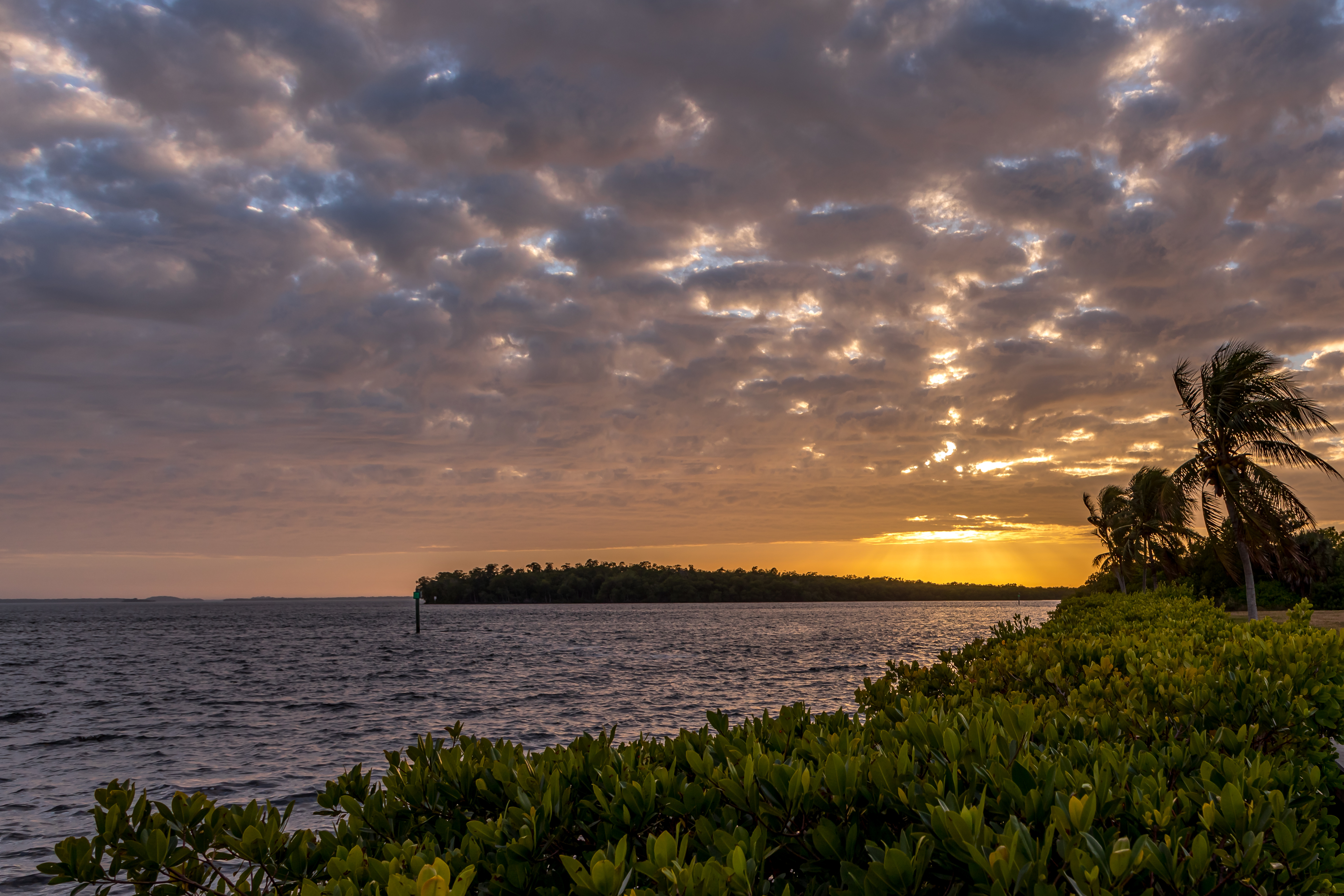
Cape Coral, Florida
- City population: 216,992
- Share of population 65+: 24.7%
- Cost of living: 4.7% above the national average
- Median household income: $72,474
- Florida state tax guide
- Popular local beaches: Yacht Club Beach, Four Freedoms Park Beach
With its desirable climate and favorable tax status, Florida is filled with popular retirement destinations. Cape Coral is unique in its waterway access, offering more than 400 miles of canals for all your boating, fishing and water sports dreams. And land lovers can enjoy the area's beaches, golfing, tennis, parks and other recreational offerings. The Yacht Club, offering 634 feet of beach, is only a 15-minute drive from most of the Cape. And if you don't mind driving a bit further, you can reach Fort Myers Beach in under an hour. Fort Myers, included in Cape Coral's metro area, is yet another great place to consider for your retirement.
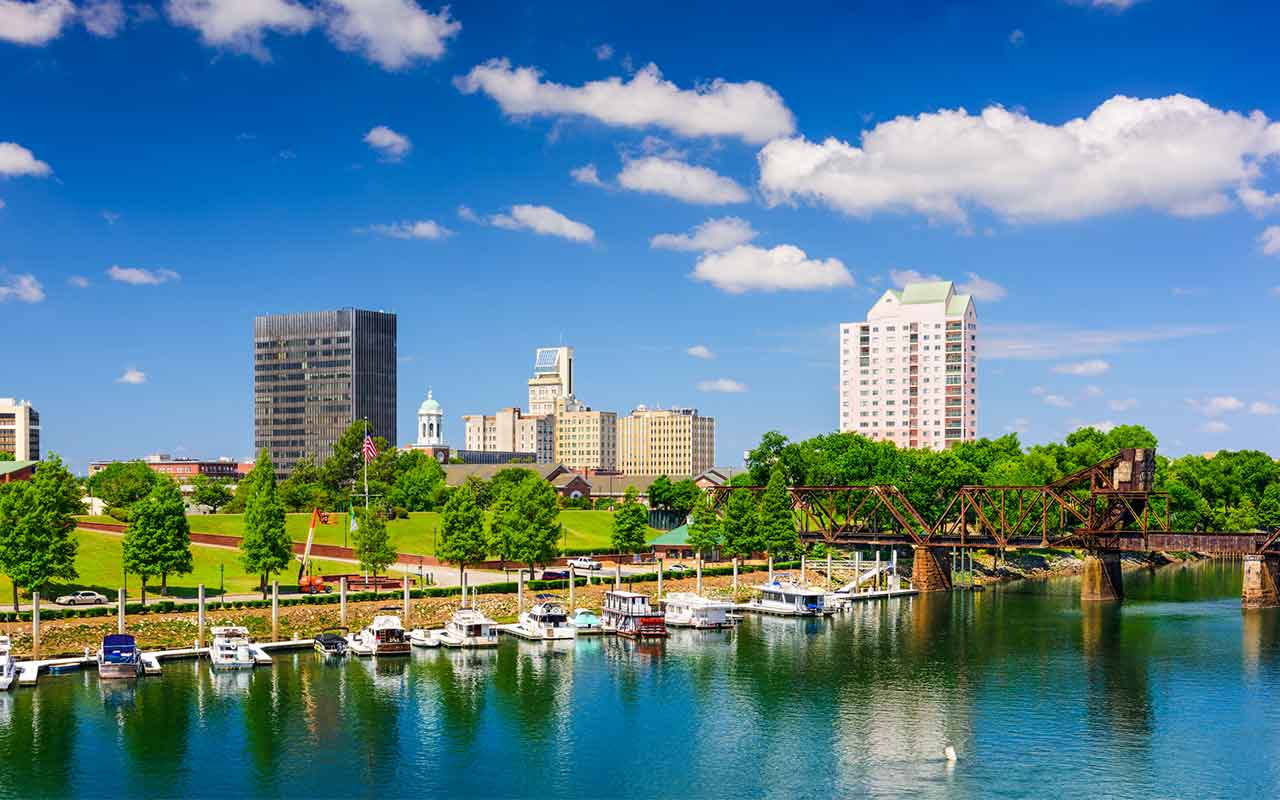
Augusta, Georgia
- City population: 202,081
- Share of population 65+: 14.5%
- Cost of living: 17.2% below the national average
- Median household income: $50,492
- Georgia state tax guide
- Popular local beaches: Clarks Hill Lake, Langley Pond Park
Some of the best coastal beaches in Georgia — Tybee Island, Jekyll Island and Cumberland Island National Seashore — are a three- to four-hour drive from Augusta. But within about 30 minutes, you can find a couple of freshwater beach options at Clarks Hill Lake in Lincolnton, Georgia, and Langley Pond Park in Langley, South Carolina. In town, you can also enjoy kayaking and cruising along the Savannah River, as well as running, walking and biking along the Augusta Canal.
Revitalization efforts have been pushing especially hard over the past several years, expanding the area's appeal beyond the annual Masters golf tournament in April and its accompanying celebrations and tourism revenue. In a walkable downtown, retirees can enjoy restaurants, museums, galleries and nightlife venues. Augusta is ripening into a particularly peachy city.
Augusta University, along with other area schools, adds some nice college-town amenities, including free classes for Georgia residents age 62 and up. The region also has a top-notch health care network, including several hospitals and numerous specialists focused on oncology, geriatrics and senior health.
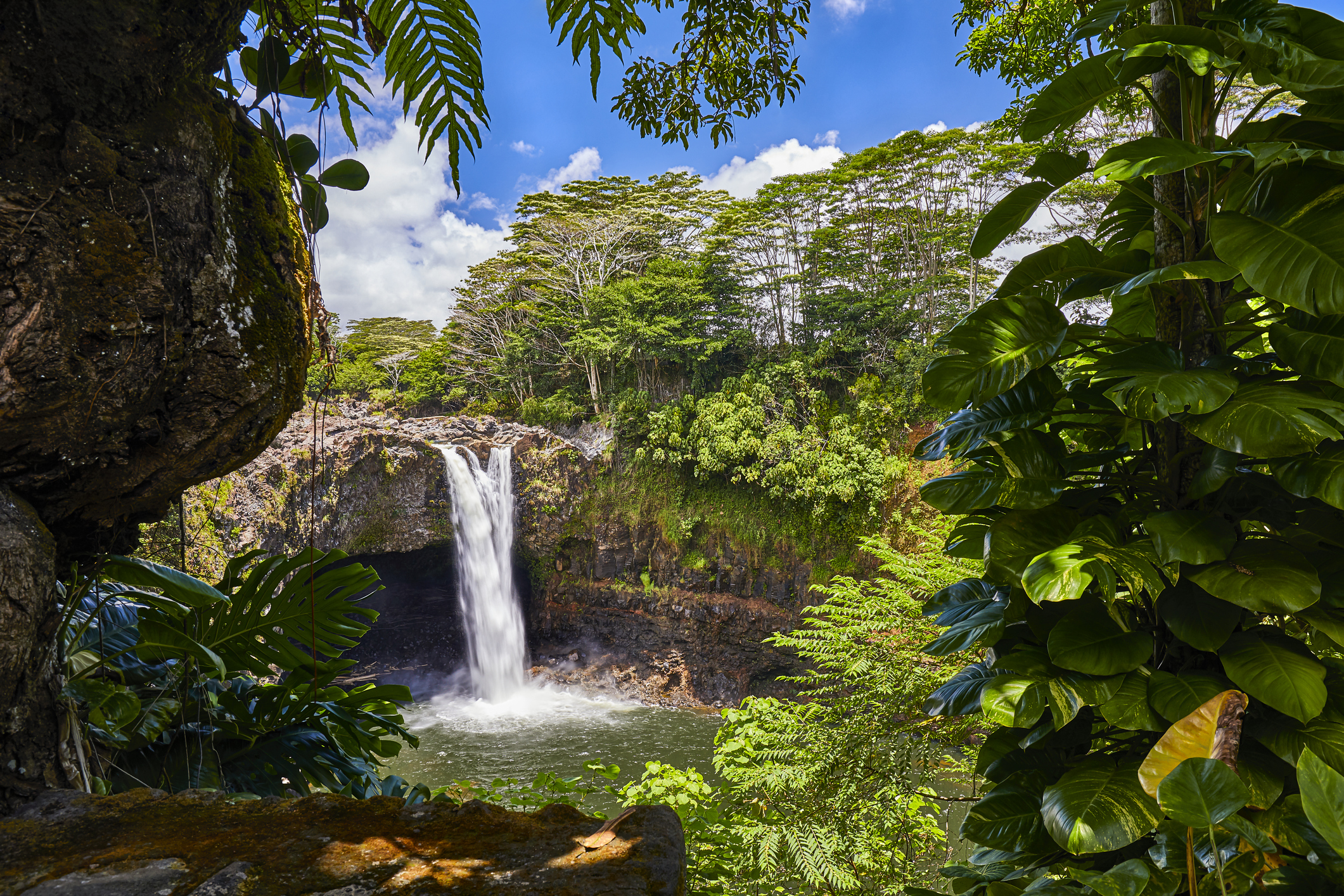
Hilo, Hawaii
- City population: 44,186
- Share of population 65+: 22.5%
- Cost of living: n/a
- Median household income: $75,589
- Hawaii state tax guide
- Popular local beaches: Carlsmith Beach Park and Richardson's Ocean Park
Hawaii is well known for its beautiful beaches, enviable climate and high prices. In Hilo, on the Big Island, the overall cost of living is 31.9% above the national average, according to Sperling's BestPlaces. But at least that's more affordable than capital city Honolulu, on Oahu, where living costs are a steep 71.5% above the national average. The average home value in Hilo is $490,904, according to Zillow — still pricey, to be sure, compared with the U.S. average of $347,716, but much more reasonable than the $787,369 average in Honolulu.
And the local lifestyle is still priceless. The colonial town's mood is quiet and calm, but its location on the eastern coast of the island and near active volcano Mauna Loa offers plenty of opportunities for adventure. You can explore rainforests and waterfalls, as well as Hawaii Volcanoes National Park. In the downtown and waterfront areas, enjoy galleries, shops, restaurants and museums, including the 'Imiloa Astronomy Center. And while the island's most popular beaches are up to 80 miles away on the opposite coast, Hilo has several quality options — though some have rocky shorelines and uniquely black sand — right in town where you can swim, snorkel and soak up the aloha spirit.
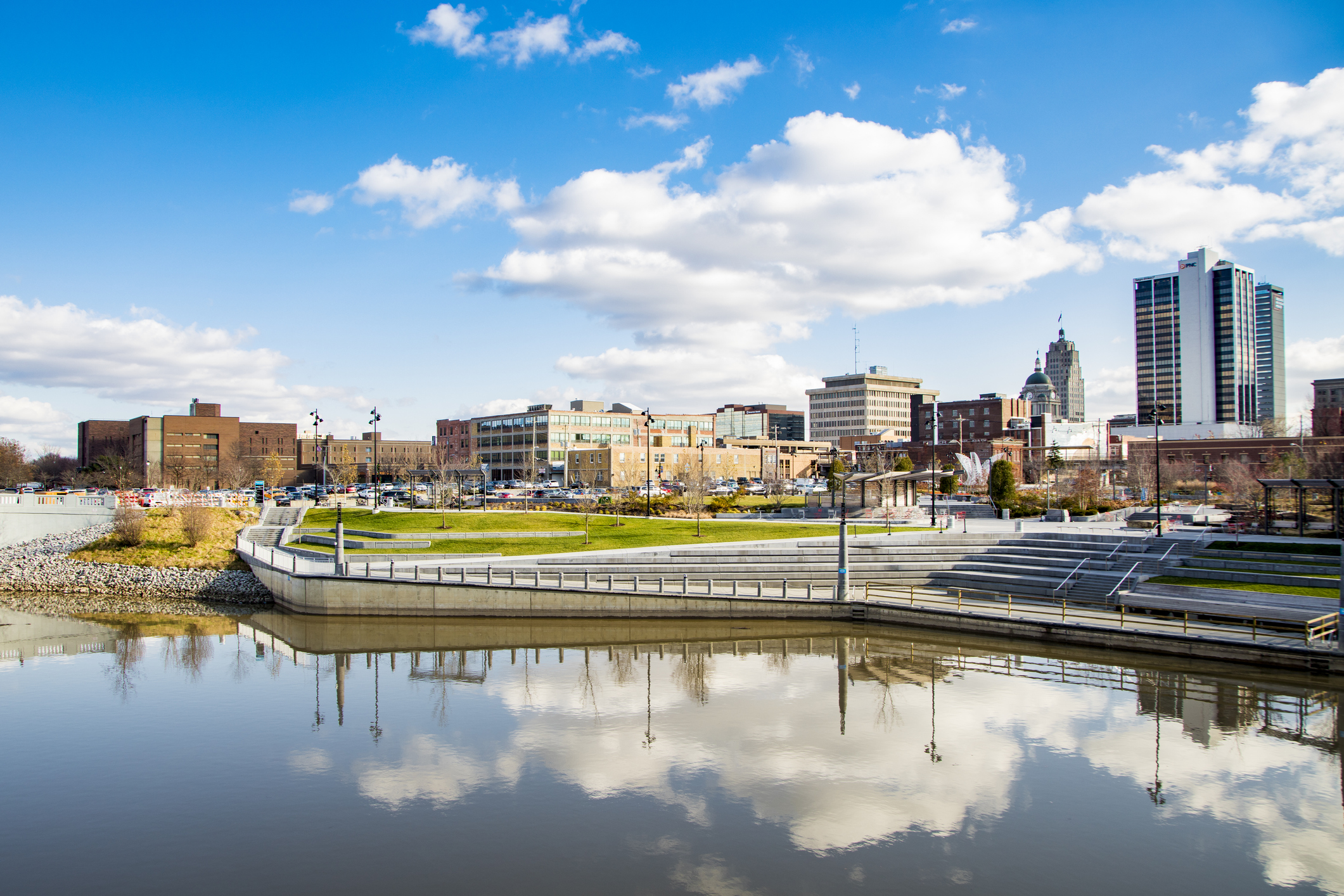
Fort Wayne, Indiana
- City population: 267,927
- Share of population 65+: 14.7%
- Cost of living: 10.1% below the national average
- Median household income: $58,233
- Indiana state tax guide
- Popular local beaches: Fox Island
The Fort Wayne metro area's affordability will not cost you in amenities. Despite being home to a nice collection of quiet neighborhoods, it also houses a thriving arts scene and hosts a number of festivals and events throughout the year, including the family-friendly Three Rivers Festival in the summers. Indeed, the three local rivers — the St. Marys, the St. Joseph and the Maumee — are a main feature of the area, providing ample opportunities for canoeing, kayaking and cruising.
In town, you can enjoy Fox Island's beach on Bowman Lake and a separate dog beach for your furry friends. Within an hour's drive, there are also beaches at Pokagon State Park in Angola, Chain O'Lakes State Park in Albion and Winona Lake. More outdoor attractions: Fort Wayne is more than 80 parks and 100 miles of hiking and biking trails.
Fort Wayne is by no means a metropolis, but if you ever feel the need for a small-town escape head two hours south to Richmond, one of the cheapest small towns in America. Its claim to fame (other than being budget-friendly): Some of the earliest jazz records were recorded in Richmond by such greats as Duke Ellington and Louis Armstrong.

Manhattan, Kansas
- City population: 53,829
- Share of population 65+: 9.4%
- Cost of living for retirees: 9.3% below the national average
- Median household income: $55,316
- Kansas state tax guide
- Popular local beaches: Tuttle Creek State Park
The Little Apple may not have all the bright lights and major metropolitan allure of New York City, but it has plenty to recommend itself, as well as significantly lower costs. (The cost of living in New York's Manhattan is 127.8% above the national average, with housing a ridiculous 405% above average.) Housing costs in this Manhattan are particularly affordable at 27.5% below the national average.
Home to Kansas State University, Manhattan affords residents attractive college-town amenities, including the privilege of calling the school's top-notch athletics program your home team. One particularly senior-friendly offering: The university, in collaboration with the local UFM Community Learning Center and the University of Kansas Osher Institute, offers courses year-round for $50 each, along with special events, aimed at encouraging lifelong learning, especially for locals age 50 and older.
The city is also developing an expanded trail system — beyond the existing 40 miles of trails throughout the city — for walking and biking throughout the city. And at Tuttle Creek State Park's River Pond, you can enjoy a swimming beach amidst the 1,200-acre park, where there are also campgrounds, nature trails, picnic areas, horse shoe pits, an archery range and more.
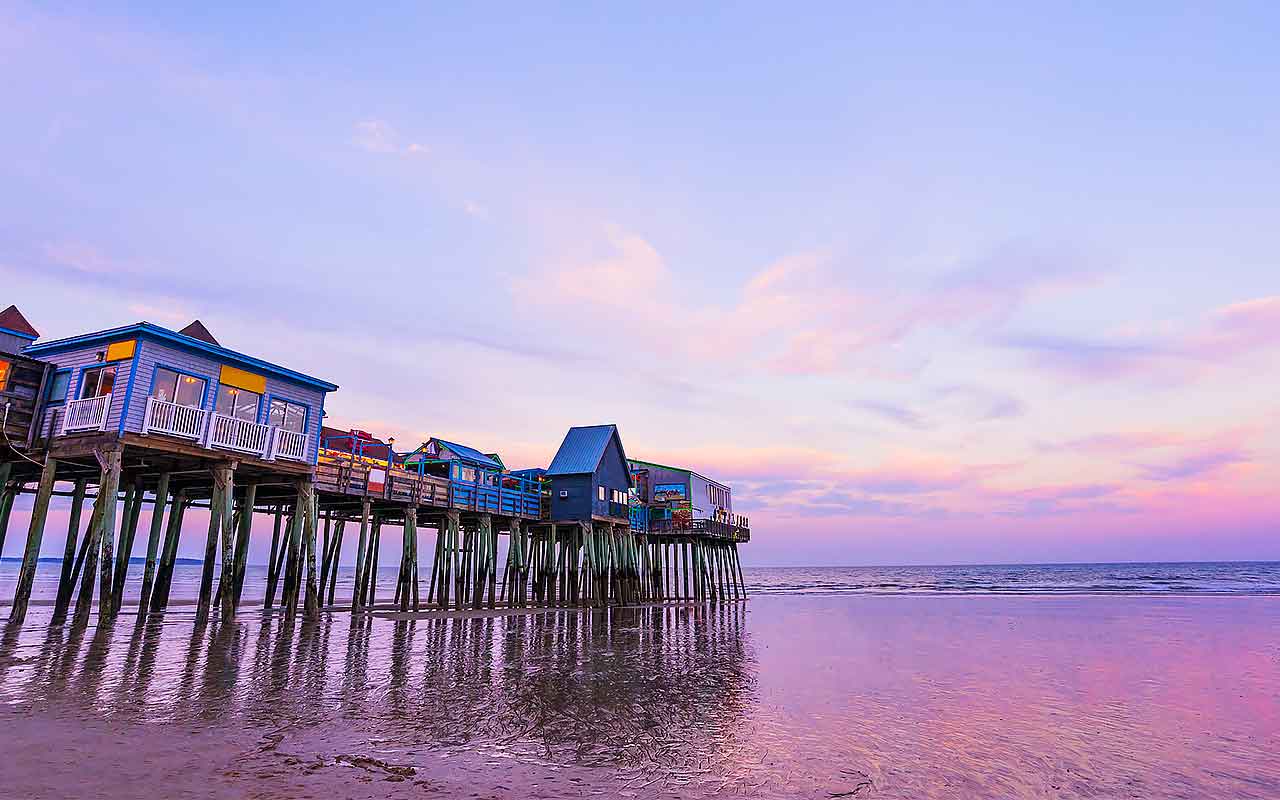
Portland, Maine
- City population: 68,424
- Share of population 65+: 16.8%
- Cost of living: 10.7% above the national average
- Median household income: $71,498
- Maine state tax guide
- Popular local beaches: Crescent Beach, Ferry Beach, Old Orchard Beach
The largest city in Maine, Portland offers a lively downtown and plenty of urban-esque amenities amidst the great outdoors of the Pine Tree State. You can enjoy museums, theaters and an array of eclectic dining. The flagship L.L. Bean store in nearby Freeport is a must-see for many visitors, but resident shoppers also flock to Portland’s unique boutiques and outlets.
All the while, you’re never too far from the area's many beaches. That means ample opportunity to lounge on the shore or dive into water-based activities including fishing, kayaking, sailing and even surfing. And of course, hiking and biking trails abound — perfect in the (much) colder months, too, for cross-country skiing and snowshoeing.
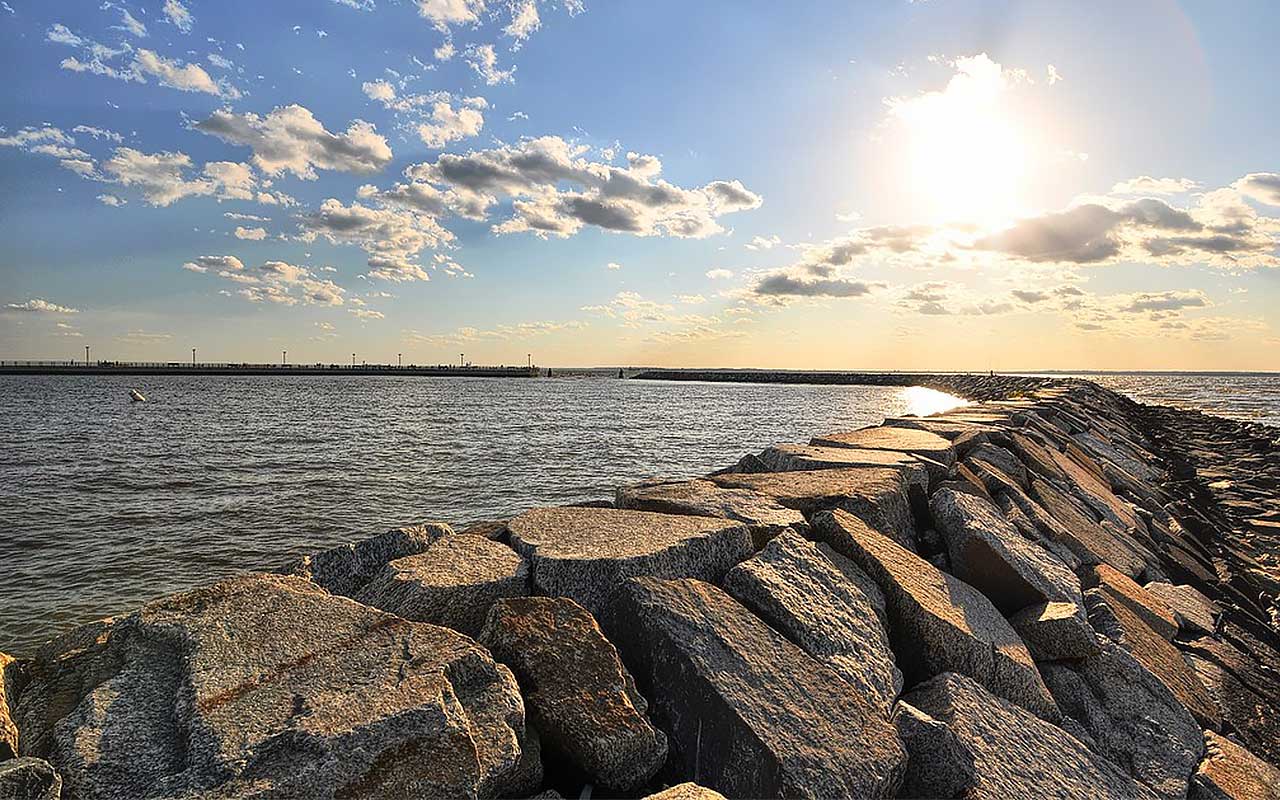
Easton, Maryland
- City population: 17,342
- Share of population 65+: 26.8%
- Cost of living: n/a
- Median household income: $75,198
- Maryland state tax guide
- Popular local beaches: Matapeake Beach
On the eastern shore of the Chesapeake Bay, this small town is packed with history, charm and senior residents. You can find a surprising number of eclectic dining options in town, as well as an array of boutique shops, art galleries and other cultural attractions.
And you could use the extra opportunity to save. Maryland is, by and large, a wealthy area, home to a great number of millionaires, and the living costs reflect that. The cost of living for all residents in Easton is 5.9% above the national average, according to Sperling's BestPlaces, which makes it at least more affordable than Annapolis, on the opposite shore of the bay, where living costs are 14.7% above the national average.
And water-loving retirees still have access to the same torrent of activities, such as kayaking, canoeing, boating and fishing, common on the Chesapeake Bay. Note though that it typically takes a long drive to cross the Bay, putting most of the popular nearby beaches an hour or two away. Matapeake, on Kent Island, is a nice exception, about 30 miles from Easton. It includes a public swimming beach, as well as a dog beach.
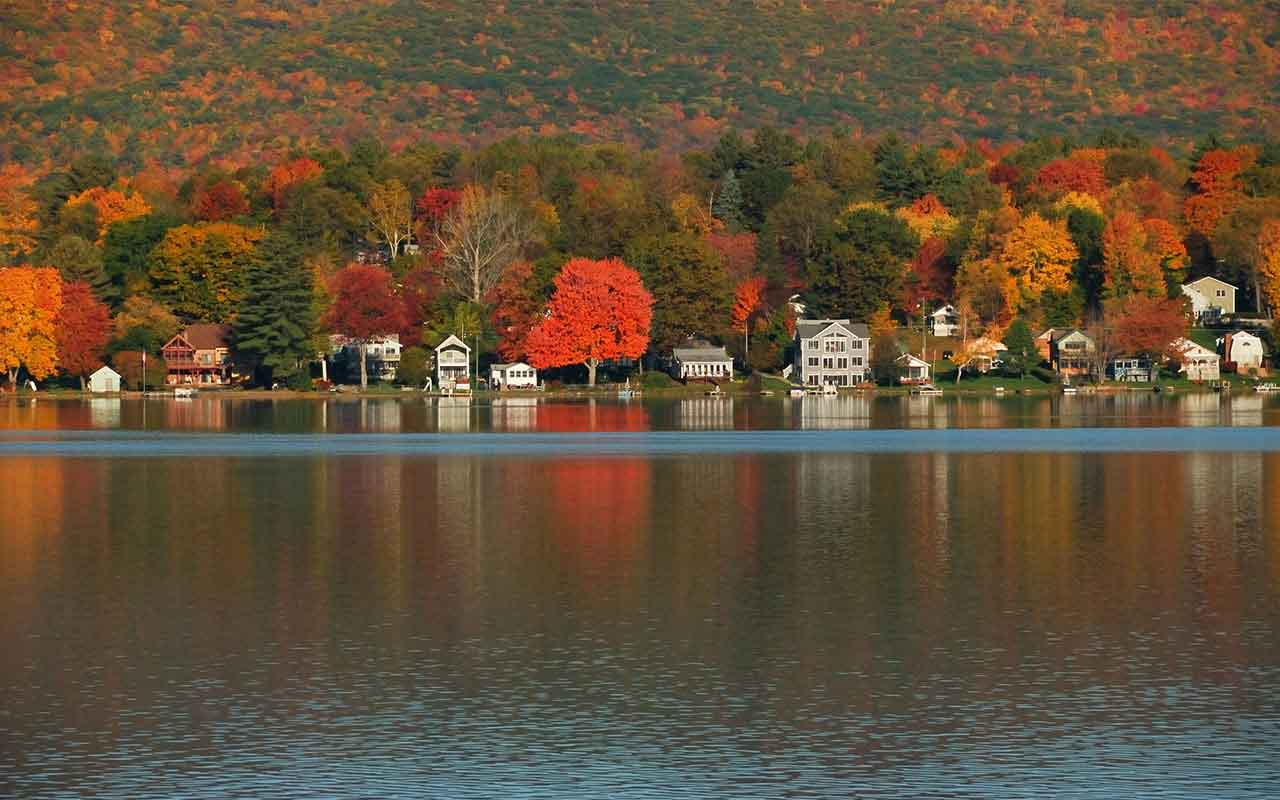
Pittsfield, Massachusetts
- City population: 43,310
- Share of population 65+: 20.0%
- Cost of living: n/a
- Median household income: $66,859
- Massachusetts state tax guide
- Popular local beaches: Burbank Park on Onota Lake
New England is notoriously expensive, but Pittsfield, located in the western part of Massachusetts, offers a small pocket of relative affordability. The average home value in the city is $277,555, compared with $596,410 for all of Massachusetts and $718,233 for Boston proper, according to Zillow.
Leaf peeping in the fall may be enough to draw you to the Berkshires. But you have plenty to enjoy all year round, including excellent sites for camping, fishing, hiking and skiing. Several beaches are within a two-hour drive of Pittsfield, and in town, you can hit Burbank Park beach on the shores of Onota Lake. Nearby, enjoy musical performances at the Tanglewood Music Center, the summer home of the Boston Symphony Orchestra. There’s also world-class art at the Clark Art Institute in Williamstown and the Massachusetts Museum of Contemporary Art (MASS MoCa, for short) in North Adams.
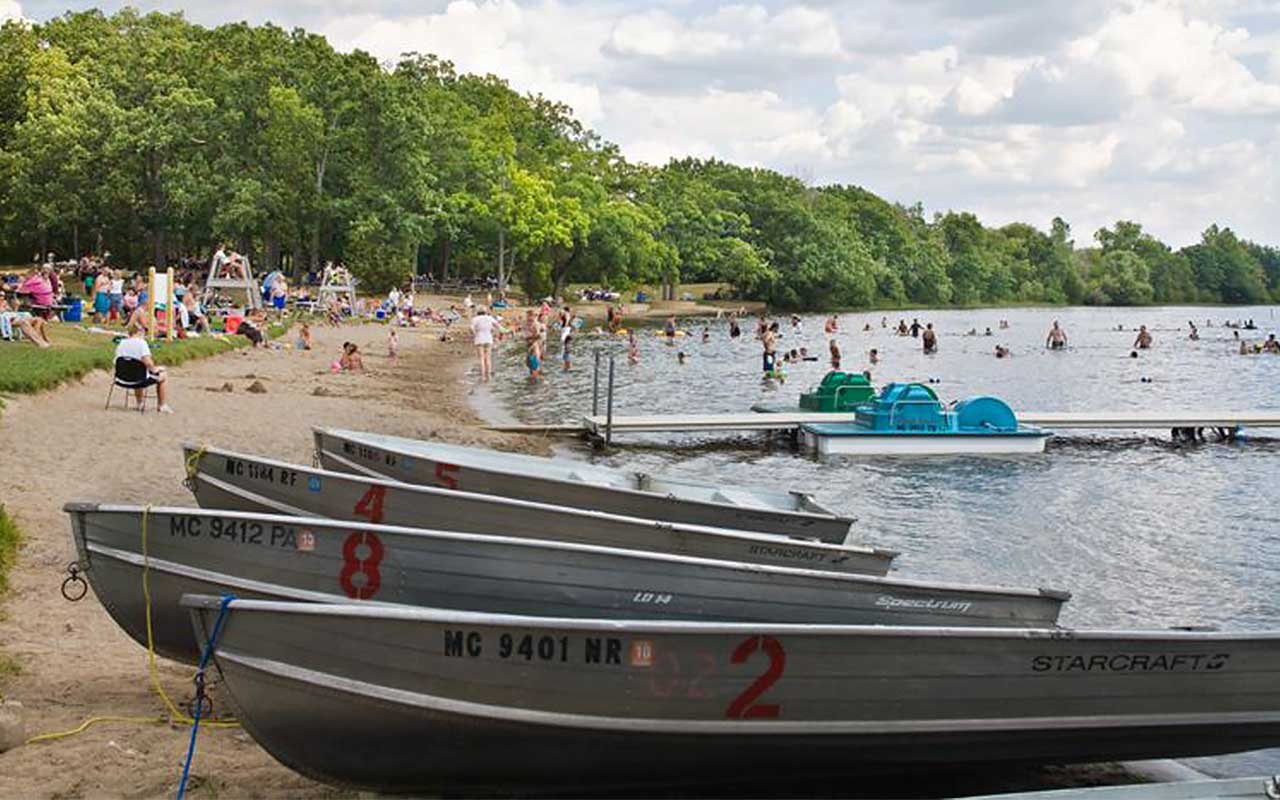
Ann Arbor, Michigan
- City population: 119,875
- Share of population 65+: 12.3%
- Cost of living: n/a
- Median household income: $78,546
- Michigan state tax guide
- Popular local beaches: Independence Lake Park, Van Buren Park, Island Lake Recreation Area
Another college town well suited to retirees, Ann Arbor is home to the University of Michigan with all its educational programs (including the Osher Lifelong Learning Institute), sporting events and cultural affairs. The university also runs the Geriatrics Center & Institute of Gerontology, which focuses on health care issues that come with aging. Along with its research facilities, medical facilities and staff, the Center offers programs and classes to help older adults maximize their good health and independence.
The area's public transportation options are another noted winning attribute for older residents. Bonus: Within 20 miles of the city are several parks and recreation areas, including Independence Lake Park, Van Buren Park and Island Lake Recreation Area, that offer beachfront fun.
A downside, however, is affordability. The average home value is $481,211, versus just $232,511 for the rest of the state, according to Zillow.
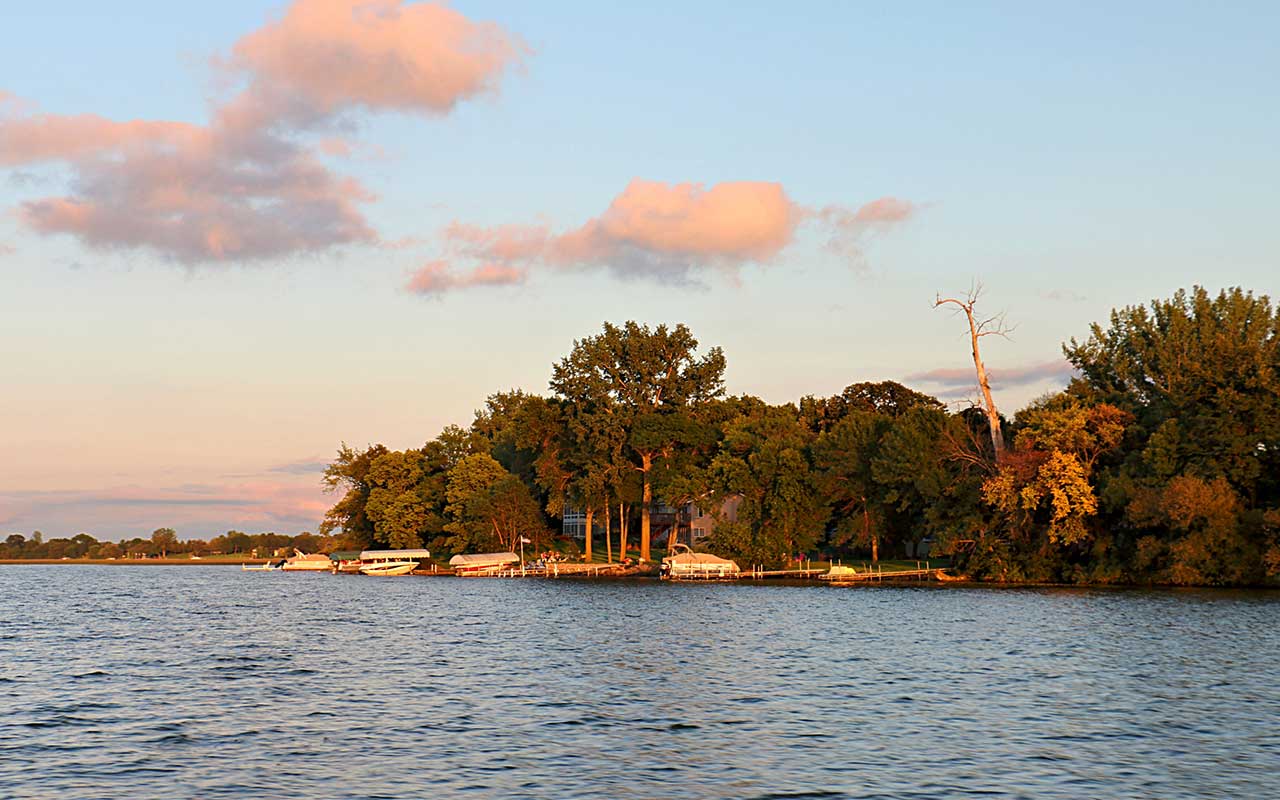
Mankato, Minnesota
- City population: 45,140
- Share of population 65+: 12.5%
- Cost of living: 7.4% below the national average
- Median household income: $61,726
- Minnesota state tax guide
- Popular local beaches: Hiniker Pond, Lake Washington, Madison Lake
Despite the cold winters (and equally harsh tax situation), the Land of 10,000 Lakes can offer some nice waterfront retirement spots, including Mankato, about 90 miles southwest of the Twin Cities. The many ponds, lakes and rivers in town and nearby offer plenty of opportunities for fishing, boating and swimming. Spring Lake Park in North Mankato also offers a unique sand bottom swimming facility.
For more urban offerings, Mankato is still a small city, but development is on the rise, and the local economy is growing fast. Revitalization projects have added a nice mix of restaurants, shops, entertainment venues and more to the downtown area, and the city's strategic plan aims to spread that level of development throughout the Minnesota River Valley. Some goals of the plan include adding housing, specifically within walking distance of where jobs and shops are, and expanding Riverfront Park and other recreational land.
So far, all that growth has yet to push up living costs. While other metro areas in Minnesota come with above-average expenses, Mankato's cost of living remains below the national average.

Kansas City, Missouri
- City population: 509,297
- Share of population 65+: 13.9%
- Cost of living: 5.6% below the national average
- Median household income: $65,256
- Missouri state tax guide
- Popular Local Beaches: Shawnee Mission Park Beach
The Kansas City metro area straddles two states and offers a wide range of attractions for people of all ages including retirees. In the summer months, you can enjoy the beach at local lakes, including the Shawnee Mission Park Beach in a nearby Kansas suburb. The music and arts scene is particularly vibrant, being home to legendary jazz musician Charlie Parker as well as the American Jazz Museum, the Nelson-Atkins Museum of Art, the Kauffman Center for the Performing Arts and the Kansas City Art Institute. For foodies, authentic barbecue is big, too. And you can entertain visiting grandkids with Legoland, the Sea Life aquarium and the Kansas City Zoo.
Also, while the University of Missouri's main campus is about 125 miles east in Columbia, the school brings more than 16,000 undergraduate and graduate students, as well as all the amenities of college life, to its Kansas City campus.
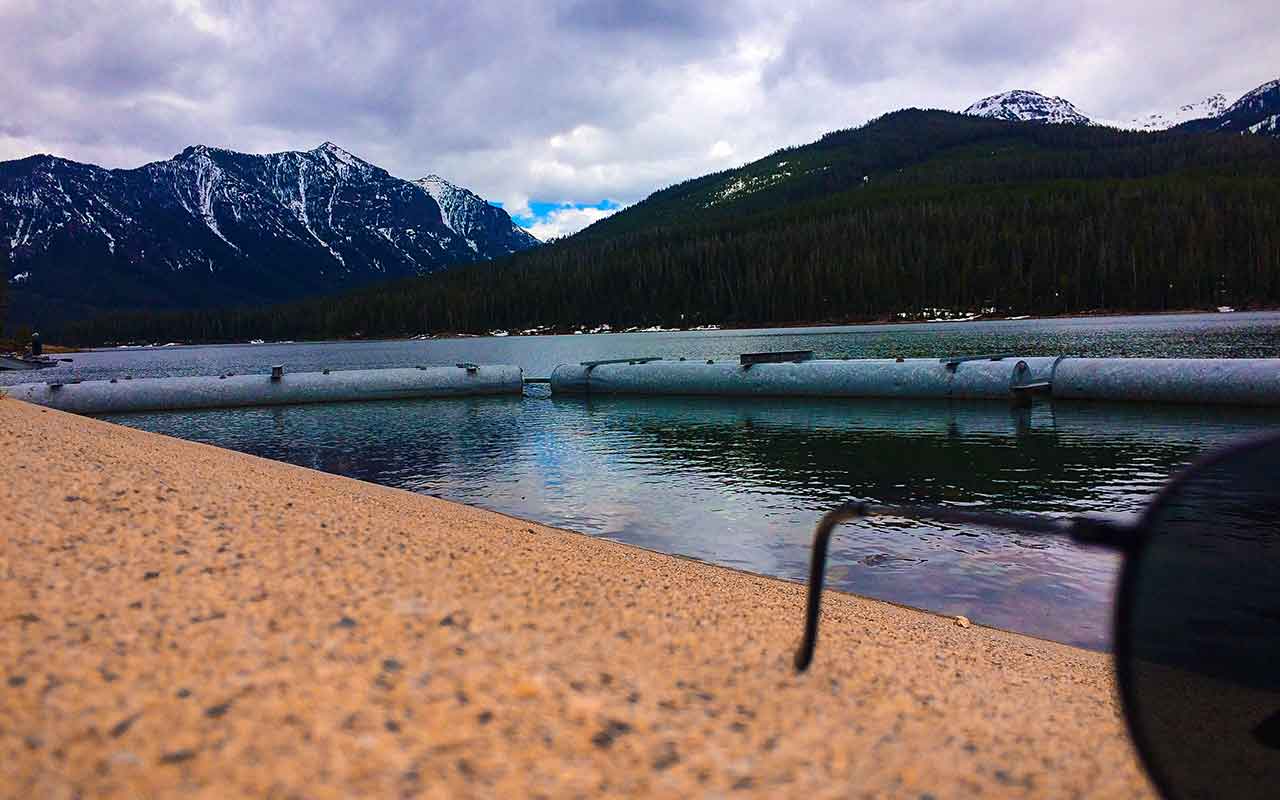
Bozeman, Montana
- City population: 56,123
- Share of population 65+: 10.7%
- Cost of living: 20.6% above the national average
- Median household income: $74,113
- Montana state tax guide
- Popular local beaches: East Gallatin Recreation Area (a.k.a. Bozeman Beach)
If you've ever dreamed of retiring to the mountains, here's your chance. Bozeman is in southern Montana, nestled in the Gallatin Valley and surrounded by majestic ranges and national forests. Yellowstone and Grand Teton national parks sit due south of Bozeman. The geography means you have to be comfortable hiking, mountain biking, skiing and backcountry exploring your way through retirement. Hunting and fishing are also popular local activities. In the East Gallatin Recreation Area, you can even enjoy a small beach at the pond along with rock climbing, hiking and fishing.
But don't expect total isolation. Montana State University's Bozeman campus is home to about nearly 17,000 students. Exuberant co-eds might not be the neighbors you pictured in your mountain-view retirement destination, but you may enjoy the dining, culture and entertainment options that come with a college town.
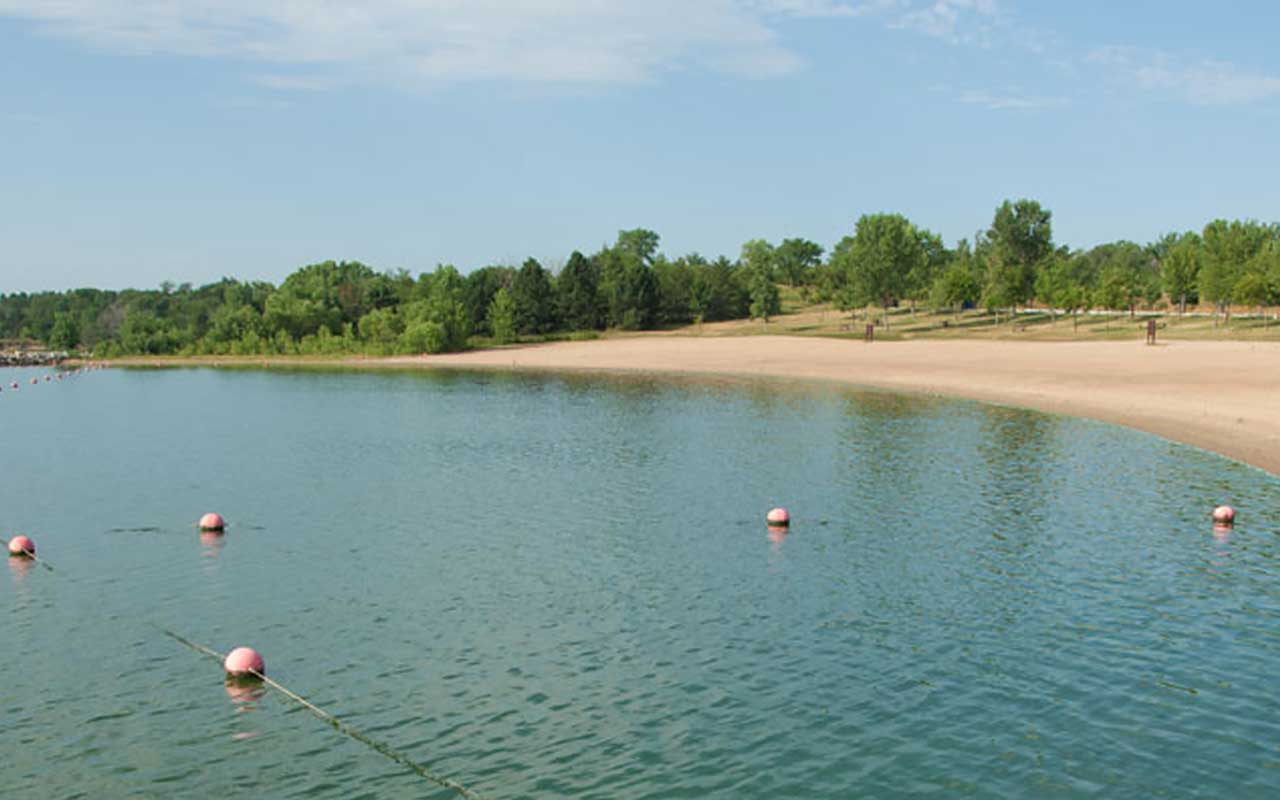
Lincoln, Nebraska
- City population: 292,627
- Share of population 65+: 14.0%
- Cost of living: 6.6% below the national average
- Median household income: $67,846
- Nebraska state tax guide
- Popular local beaches: Branched Oak State Recreation Area, Pawnee State Recreation Area
Lincoln may not be home to financial guru Warren Buffett like Omaha, which is about an hour north, but it has plenty of other notable points to recommend it. The capital city offers an abundance of attractions, including more than 130 parks, fine restaurants, an active nightlife and a number of museums and theaters. Highlights include the Sunken Gardens (for budding horticulturalists) and the Museum of American Speed (for car enthusiasts). And nearby, you can relax or play waterside, despite the state's landlocked position. The Branched Oak and Pawnee state recreation areas each feature two swimming beaches, as well as opportunities for boating, hiking, hunting, horseback riding and more.
Being a college town, home to both the University of Nebraska's Lincoln campus and Union College, the population may skew young. But the city is also prepared to assist its aging residents with its numerous health-care and social service facilities.
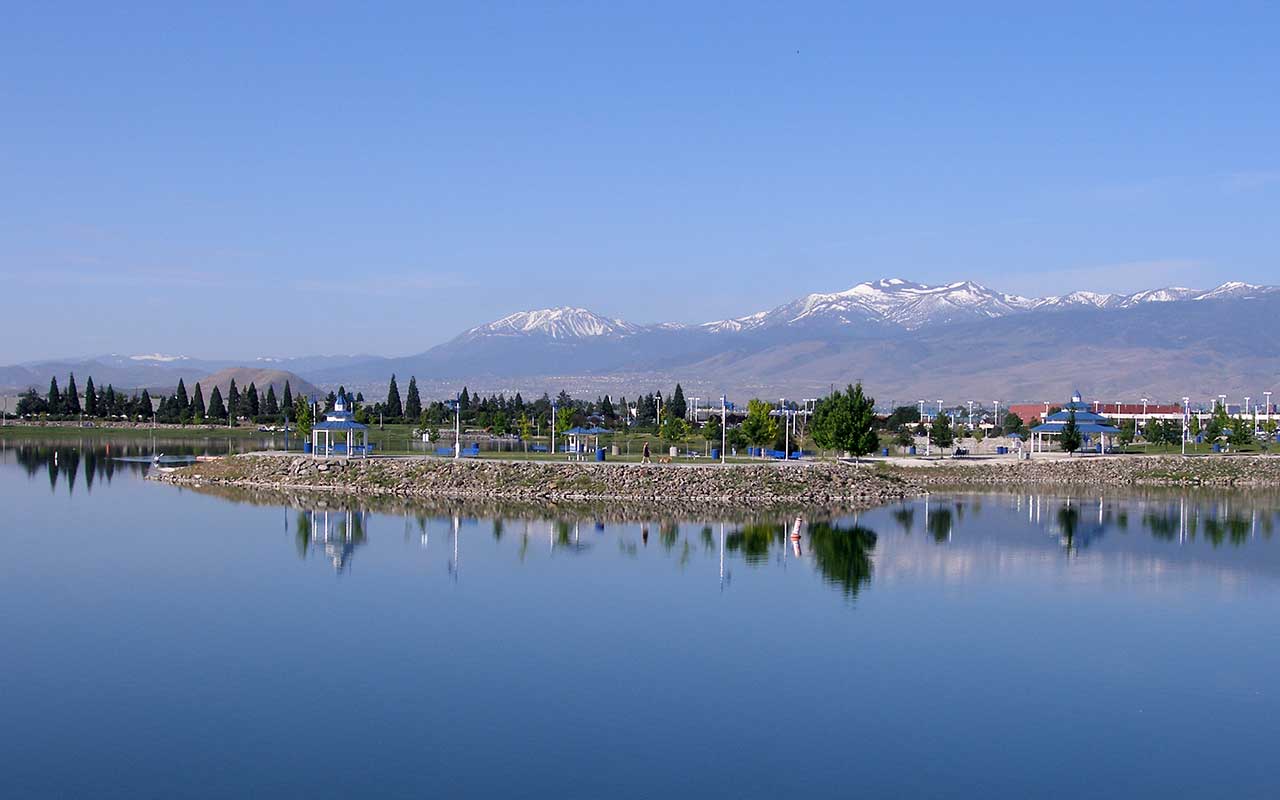
Reno, Nevada
- City population: 273,448
- Share of population 65+: 15.8%
- Cost of living: 3.5% above the national average
- Median household income: $73,073
- Nevada state tax guide
- Popular local beaches: Sparks Marina Park
Whether or not you like to gamble, retiring to Reno can make you feel like you've hit the jackpot. Boasting a small-town feel with big-city amenities, the locale proclaims itself "The Biggest Little City in the World." And it backs up the claim, offering a downtown full of restaurants, nightclubs, art galleries and music venues, on top of its well-known casinos.
Outdoor enthusiasts also win. Sparks Marina Park, about 10 minutes from Reno, centers around a 77-acre lake and offers two sandy beaches, a two-mile walking path, a fishing pier and more. The nearby Sierra Nevada mountain range and Lake Tahoe also provide ample opportunities for hiking, biking and boating in warm weather, and skiing in winter. You’ll be in good company. Gardnerville Ranchos, a small Nevada town near Lake Tahoe, is home to a surprising number of millionaires who share the same resorts and marinas.
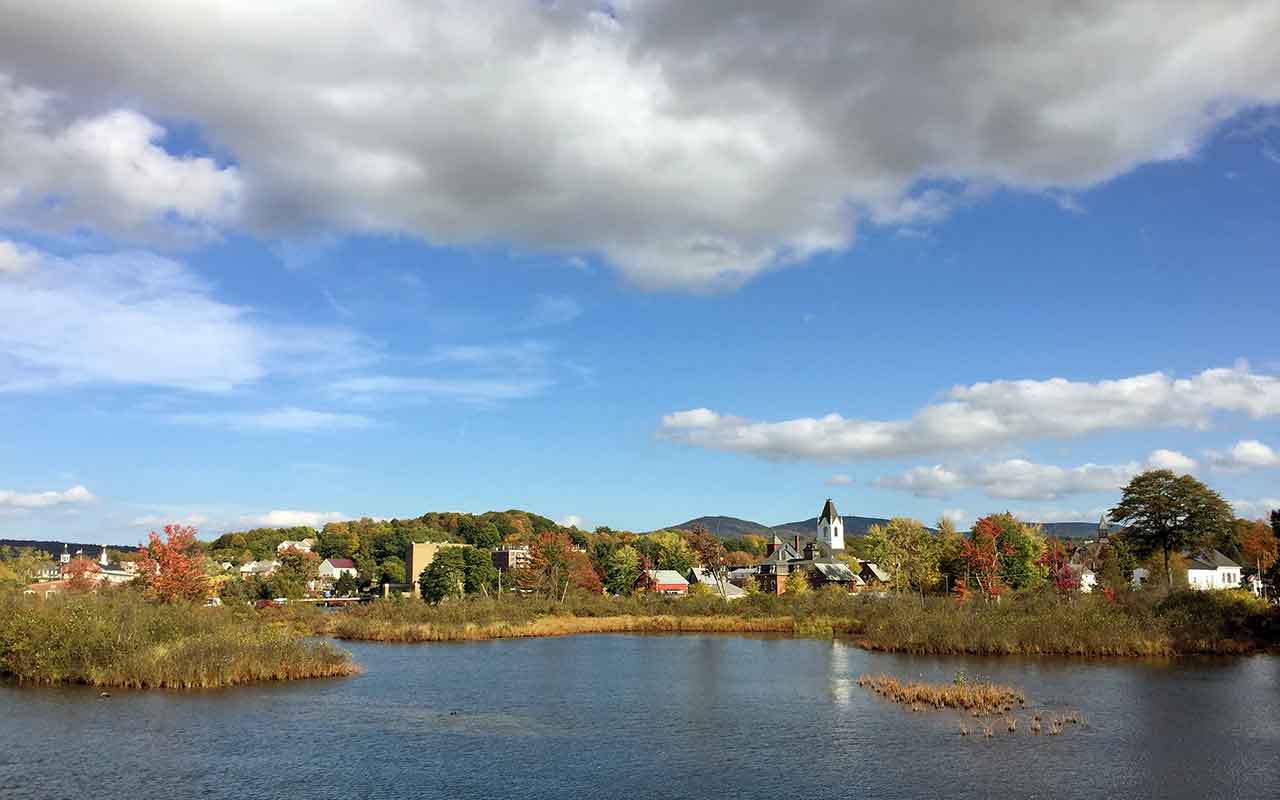
Laconia, New Hampshire
- City population: 17,086
- Share of population 65+: 22.0%
- Cost of living: n/a
- Median household income: $67,856
- New Hampshire state tax guide
- Popular Local Beaches: Bartlett Beach, Bond Beach, Weirs Beach
Tiny Laconia offers a big bargain for your retirement destination. The average home value is $389,551, compared to $454,948 for the entire state of New Hampshire. And the Granite State's tax situation for retirees is solid, too.
Tucked between Lake Winnipesaukee and Winnisquam Lake, Laconia has been dubbed "The City on the Lake," home city to New Hampshire's Lakes Region. That means plenty of beaches and water-related activities for you in the warmer months. Other outdoor recreation abounds nearby, too. Gunstock Mountain Resort in neighboring Gilford, for example, offers camping, ziplining and snow sports, as well as fairs, events and dining options.
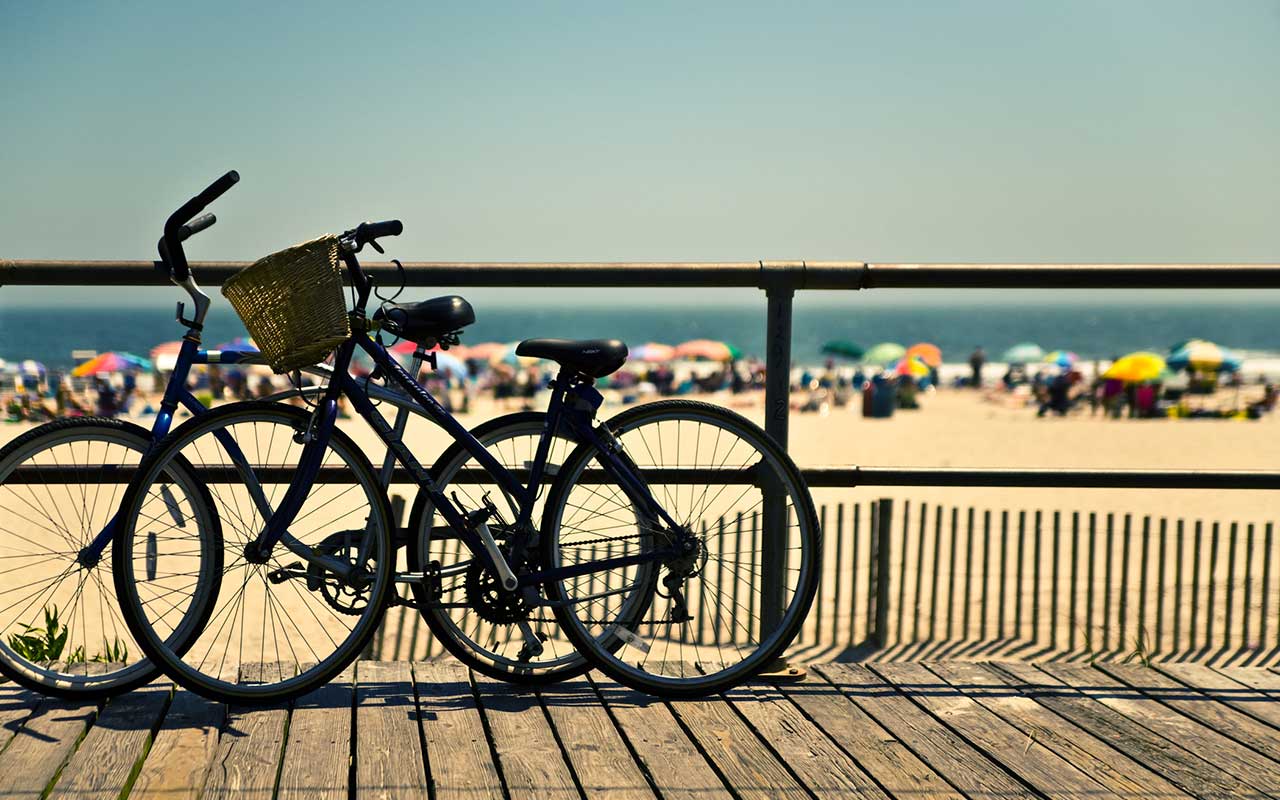
Ocean City, New Jersy
- City population: 11,303
- Share of population 65+: 33.9%
- Cost of living: n/a
- Median household income: $98,576
- New Jersey state tax guide
- Popular local beaches: 9th Street, Waverly Blvd. (surfing beach), 59th Street
The Garden State offers a number of appealing retirement destinations for those who can afford it. Ocean City is a particularly attractive spot, evidenced by the high share of seniors who have already chosen to reside there. Family-friendly beaches, a fun three-mile boardwalk and proximity to Atlantic City are notable draws.
But yes, it's going to cost you. Living costs and taxes are notoriously high all over Jersey. In Ocean City, housing is particularly expensive with the average home value within city limits at a hefty $996,772, compared with $503,432 for the state and $347,716 for the U.S., according to Zillow.
Plus, you have to budget extra for insurance to protect against possible storm and flood damage. Note, too, that Ocean City is a dry town, but you don't have to travel far to buy your booze.
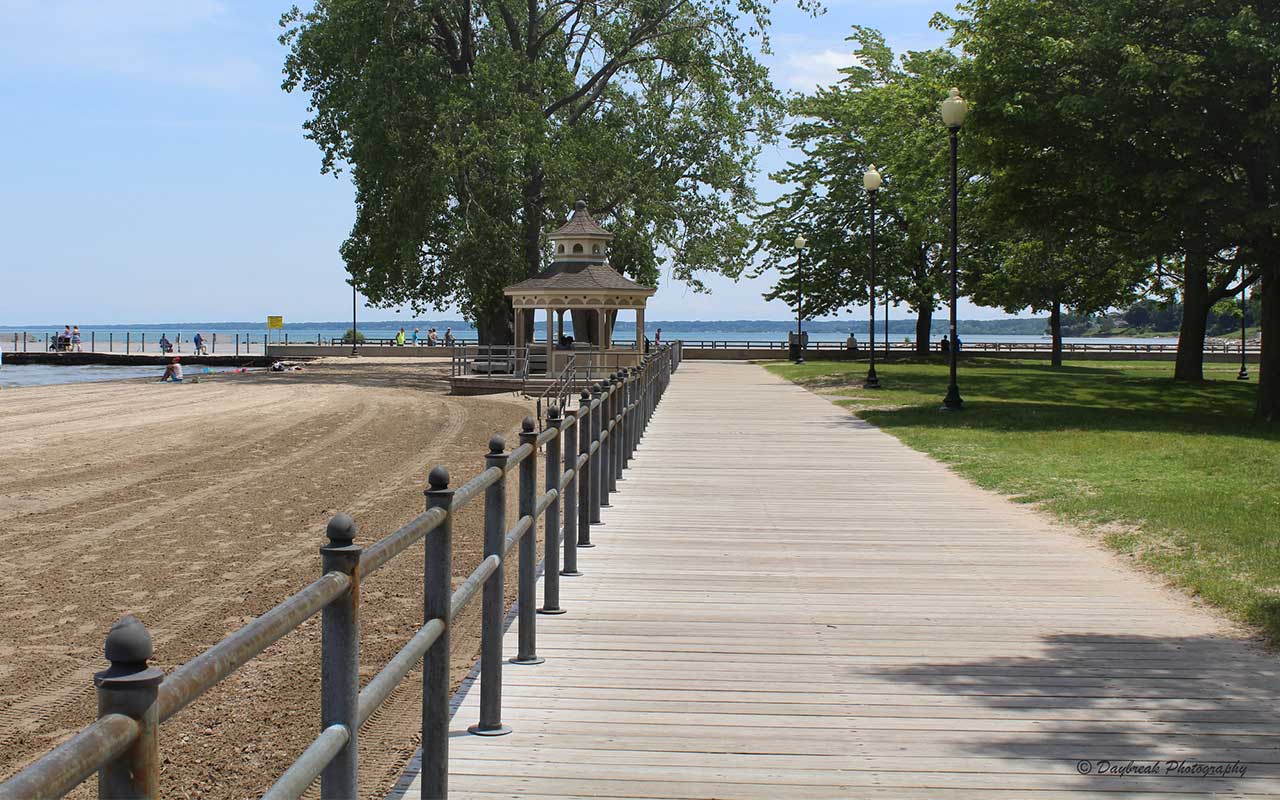
Rochester, New York
- City population: 209,352
- Share of population 65+: 12.5%
- Cost of living: 0.2% below the national average
- Median household income: $44,156
- New York state tax guide
- Popular local beaches: Ontario Beach Park, Durand Eastman Beach
While much of New York comes with above-average living costs, Rochester proves more affordable, slightly below average for retirees. Housing costs are 1.9% below average, and the average home value is $204,181, compared to $453,138 for New York state.
That can leave plenty of room in your budget for warm coats, snow shovels and other winter gear. The average snowfall is a heavy 90 inches a year. Luckily, you have plenty of local wine options to help keep you warm year-round. The surrounding Finger Lakes Region is home to more than 100 wineries, all within a 90-minute drive of Rochester, and Casa Larga Vineyards is located just 20 minutes from downtown. And in the summer, you can enjoy several beaches along Lake Ontario.
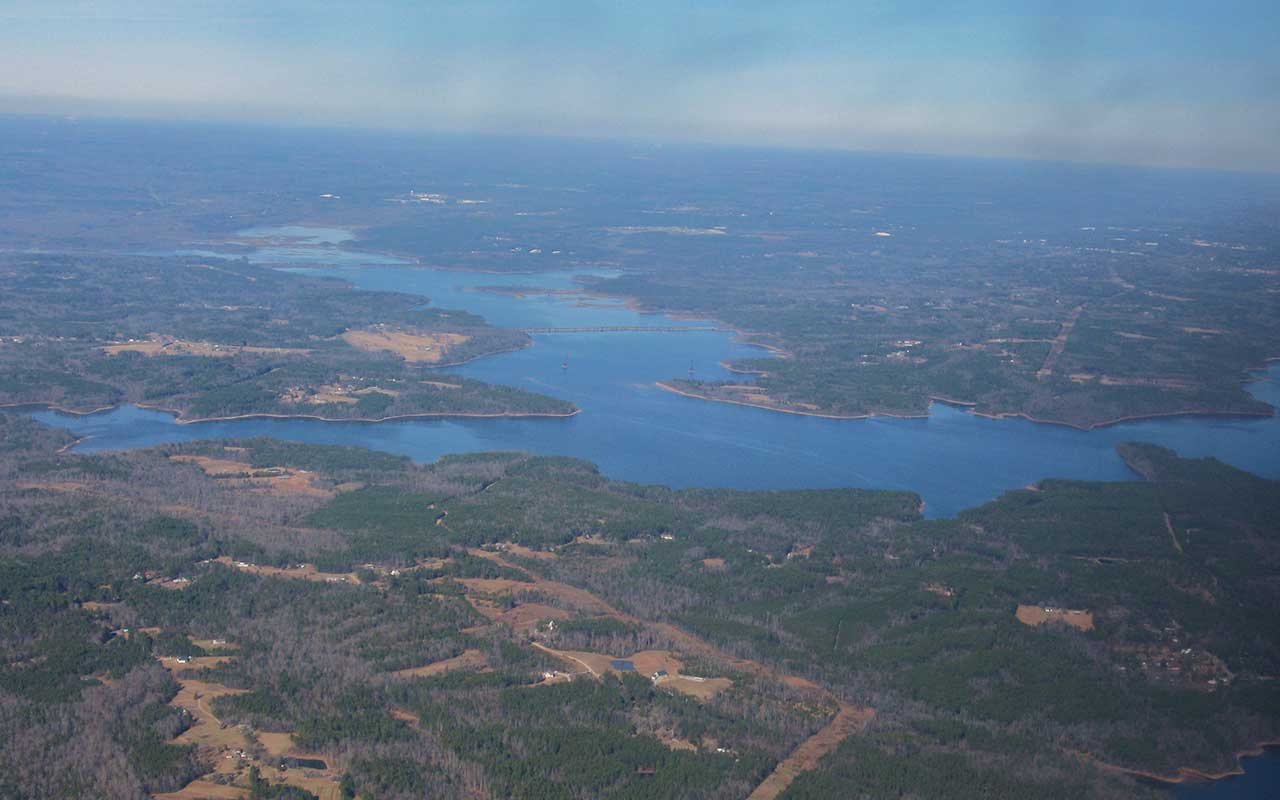
Durham-Chapel Hill, North Carolina
- City population: 62,098 (Chapel Hill); 257,170 (Durham)
- Share of population 65+: 11.9% (Chapel Hill); 12.7% (Durham)
- Cost of living for retirees: 4.2% above the national average (Chapel Hill); 1.3% below the national average (Durham)
- Median household income: $85,940 (Chapel Hill); $74,710 (Durham)
- North Carolina state tax guide
- Popular local beaches: Falls Lake State Recreation Area
Duke University and the University of North Carolina may be bitter sports rivals, but their hometowns of Durham and Chapel Hill, respectively, team up to form a powerhouse metro area, and a great place to retire. The universities also boost up the local cultural and recreational scenes, like in many college towns.
The more popular coastal beaches of North Carolina, such as those in the Outer Banks and the Emerald Isle, are a three- to four-hour drive from this metro area. But the Falls Lake State Recreation Area is much closer — less than 30 minutes from Durham — and features five swimming beaches, along with more than 300 campsites and numerous boating ramps, surrounding the 12,000-acre reservoir.
Though not a deal-breaker for every retiree, it’s worth noting that violent crimes are more prevalent in Durham than they are for the nation as a whole. The rate of violent crime is 6.80 per 1,000 residents, according to Neighborhood Scout. Chapel Hill rates safer, with just 2.13 violent crimes per 1,000 residents. And the real estate values reflect it: The average home value is $597,973 in Chapel Hill and $397,715 in Durham.
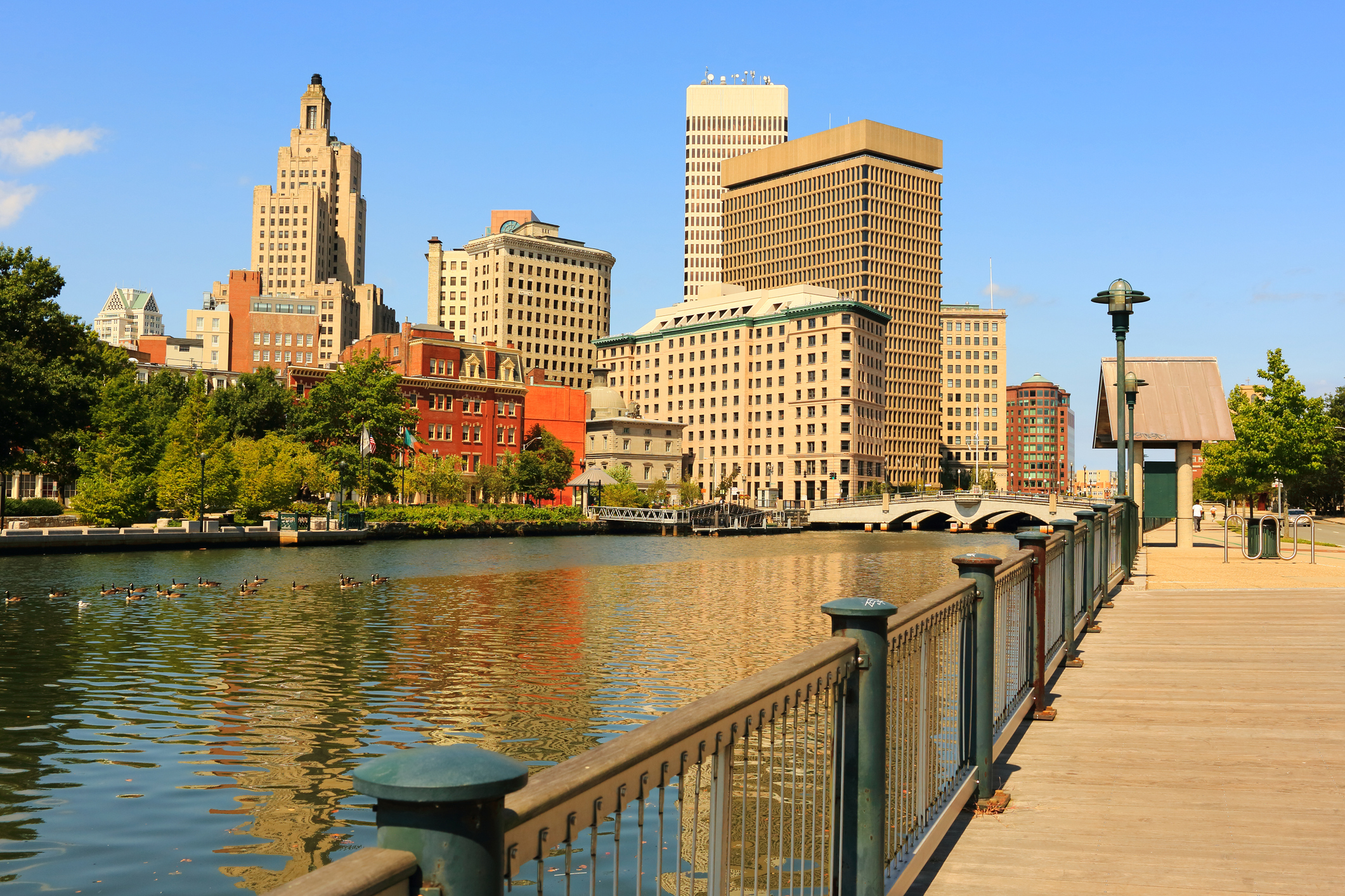
Providence, Rhode Island
- City population: 189,563
- Share of population 65+: 11.8%
- Cost of living: 12.0% above the national average
- Median household income: $61,365
- Rhode Island state tax guide
- Popular local beaches: Bristol Town Beach, Warren Town Beach, Governor Notte Park
Home to Ivy League Brown University and the world-renowned Rhode Island School of Design, as well as a handful of other colleges, Providence can be a great fit for retired intellectuals and artists. They'll have no shortage of things to do, with the schools offering gallery nights, performing arts events, educational opportunities and more. And the schools' presence has helped draw a variety of restaurants and businesses to the area, too. And of course, the Ocean State has plenty of beaches for a relaxing retirement. Coastal options are an hour or more away from Providence, but some nearby lakes, ponds and reservoirs offer quicker access for a little sun and sand.
Unfortunately, living costs and an unfriendly tax environment can be prohibitive throughout the tiny state, and Providence is no exception.
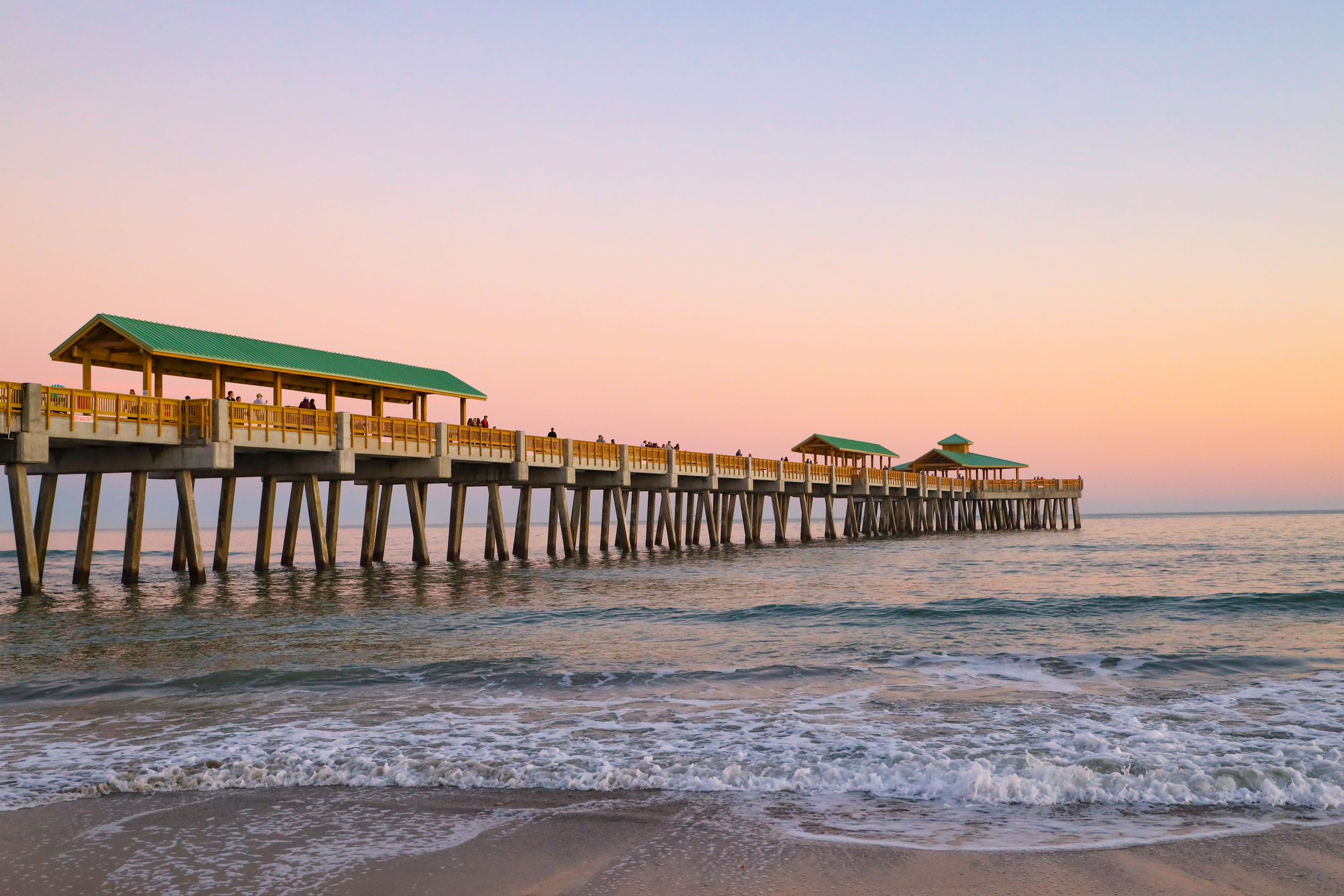
Charleston, South Carolina
- City population: 153,672
- Share of population 65+: 16.3%
- Cost of living: 0.8% below the national average
- Median household income: $83,891
- South Carolina state tax guide
- Popular local beaches: Kiawah Island, Folly Beach, Sullivan's Island
Southern charm, a rich history, city living and nearby beaches combine to make Charleston a uniquely attractive retirement destination. History buffs, in particular, can appreciate the city's Civil War sites, including Fort Sumter, and well-preserved antebellum architecture. The Preservation Society of Charleston is the oldest community-based historic preservation group in the country.
Foodies, too, can find plenty to enjoy along Charleston’s cobblestone streets, especially in the brunch and comfort food areas. And if you need to work off some of those calories, water sports, including surfing, paddle boarding and kayaking, are popular local activities — along with boating and fishing.
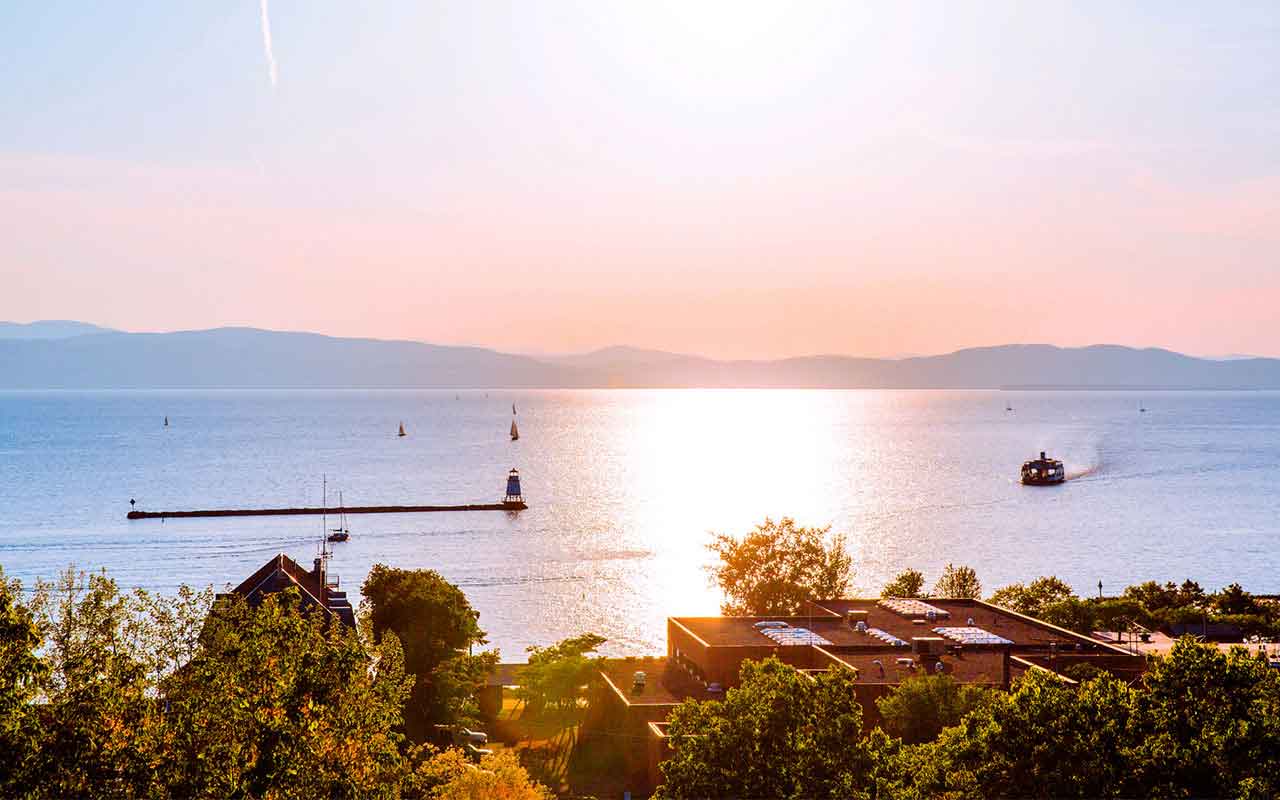
Burlington, Vermont
- City population: 44,595
- Share of population 65+: 11.6%
- Cost of living: 14.9% above the national average
- Median household income: $64,931
- Vermont state tax guide
- Popular local beaches: Blanchard Beach at Oakledge, North Beach, Leddy Beach
This small mountain city on the shores of Lake Champlain is a picturesque setting for tree-hugging retirees. Outdoor recreation is plentiful with miles of hiking and biking paths, nearby beaches where you can swim, kayak or paddleboard in the warmer months, and numerous skiing options in the area. An eco-friendly vibe permeates the town, from the businesses bolstering the city's economy, such as household-products maker Seventh Generation, to the local food movement feeding the neighborhood.
But being green isn't easy on your wallet. Taxes and living costs are high. While the average home value is a low $373,001 in the Green Mountain State, compared with the average $347,716 for the U.S., it climbs to $496,998 in Burlington.
According to Genworth, in 2023 a private room in a metro area nursing home cost a median $15,817 a month, compared with $9,733 a month for the U.S. At least you can save money on academic pursuits. The University of Vermont will cover tuition costs for state residents age 65 and older who wish to take a class, even if it's for credit.
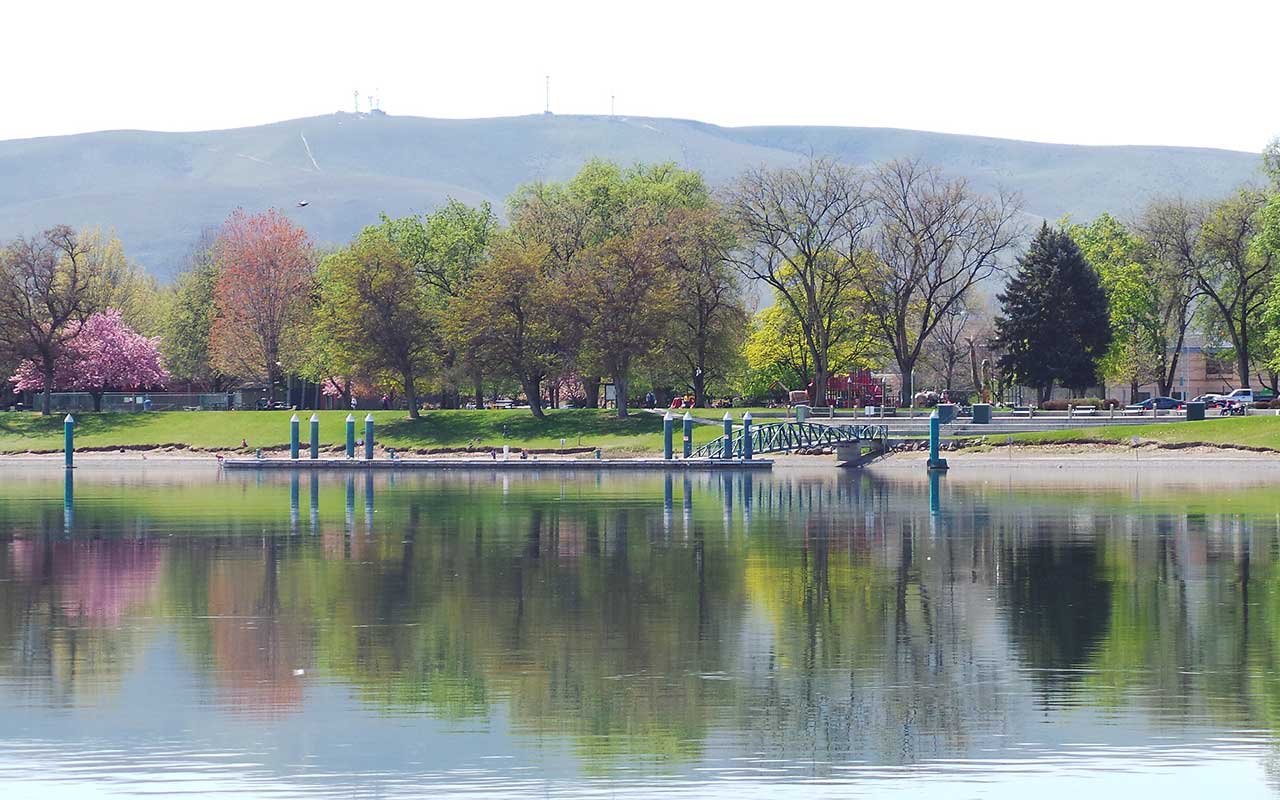
Richland, Washington
- City population: 62,82
- Share of population 65+: 16.4%
- Cost of living: 1.3% below the national average
- Median household income: $89,283
- Washington state tax guide
- Popular local beaches: Leslie Groves Park, Howard Amon Park, Two Rivers Park
Richland's metro area includes Kennewick, both of which qualify as great retirement destinations. Whether you're partial to exploring the great outdoors or focusing on wine country, you have plenty of options — you don't even have to choose one over the other. You can enjoy boating and fishing on the Columbia, Yakima and Snake Rivers, and hiking or biking on the 23-mile Sacagawea Trail. And the rivers give the area a number of beaches to enjoy, despite being more than 300 miles from the Pacific coast. There are also more than 200 wineries within a 50-mile radius, offering beautiful views and many wines to sample.

Green Bay, Wisconsin
- City population: 106,095
- Share of population 65+: 13.9%
- Cost of living: 7.7% below the national average
- Median household income: $59,174
- Wisconsin state tax guide
- Popular local beaches: Plamann Lake, Sunset Beach
The University of Wisconsin brings all the benefits of retiring in a college town to the industrial city of Green Bay. That includes a thriving cultural and arts scene, quality medical care, a walkable downtown with an array of dining and shopping options and of course sports. Plus, Lake Michigan and a number of smaller lakes provide many nearby beaches for waterfront activity and relaxation, with the biggest and most popular options being an hour or more drive away.
And plans are underway to restore the swimming beach on Green Bay itself, now home to the Beach Bay amusement park. The original beach was closed in the 1940s due to concerns about water quality, but the local government has persistently worked to right those issues and reopen the beach. In 2018, water quality was approved, and donations to fund the $7 million restoration project are being collected. The Packers agreed to match $250,000 of fundraising.
And while the state's tax situation leaves something to be desired, low living costs are attractive. Green Bay is particularly affordable, with below-average costs for retirees across several spending categories. Housing expenses are notably low, with costs 20.7% below the national average. Indeed, the average home value in Green Bay is just $236,278.

How We Picked the Best Places to Retire
To pinpoint one great retirement destination in each state, we weighed a number of factors:
- Cost of living for retirees for major metropolitan and micropolitan statistical areas, with data provided by the Council for Community and Economic Research, includes overall costs, housing, food and groceries, transportation, utilities, health care and miscellaneous expenses.
- Household incomes, poverty rates and number of health care facilities are from the U.S. Census Bureau.
- Community well-being and physical well-being scores are provided by digital health company Sharecare, in collaboration with Gallup. These are two of the five elements of well-being that make up the overall Gallup-Sharecare Well-Being Index. (The other three elements are purpose, social and financial well-being.) The index is calculated on a scale of 0 to 100 and based on more than 2.5 million nationally representative surveys. Community well-being is defined as "liking where you live, feeling safe and having pride in your community." Physical well-being is "having good health and enough energy to get things done daily."
- Population data, including the percentage of the population that is age 65 and older, is also provided by the Census Bureau. The figures are highlighted in these rankings for the benefit of readers, but were not factors in our methodology for ranking the best places to retire.
- Taxes on retirees, based on Kiplinger's State-by-State Guide to Taxes on Retirees.
- Average home values are from Zillow.com.
Profit and prosper with the best of Kiplinger's advice on investing, taxes, retirement, personal finance and much more. Delivered daily. Enter your email in the box and click Sign Me Up.

Rapacon joined Kiplinger in October 2007 as a reporter with Kiplinger's Personal Finance magazine and became an online editor for Kiplinger.com in June 2010. She previously served as editor of the "Starting Out" column, focusing on personal finance advice for people in their twenties and thirties.
Before joining Kiplinger, Rapacon worked as a senior research associate at b2b publishing house Judy Diamond Associates. She holds a B.A. degree in English from the George Washington University.
- Erin BendigPersonal Finance Writer
-
 Don't Wait Until January: Your Year-End Health Checklist to Kickstart 2026
Don't Wait Until January: Your Year-End Health Checklist to Kickstart 2026Skip the fleeting resolutions and start the new year with a proactive plan to optimize your longevity, cognitive health, and social vitality.
-
 Premium Rewards Cards: More Perks, Higher Fees
Premium Rewards Cards: More Perks, Higher FeesSome issuers are hiking the annual fee on their flagship luxury credit cards by hundreds of dollars. Are they still worth using?
-
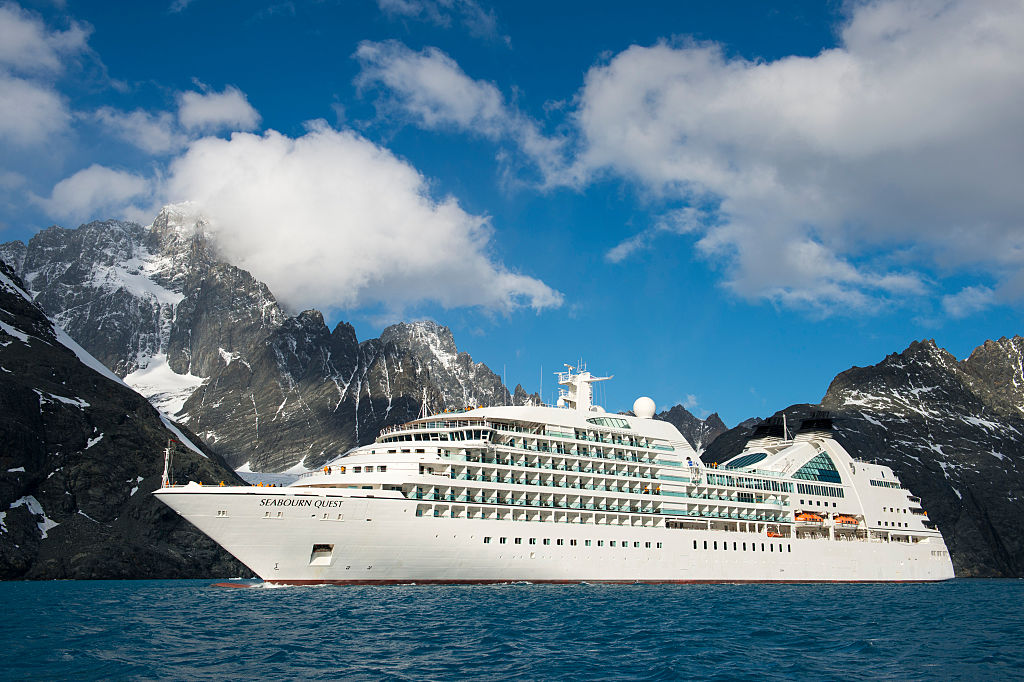 3 Trips to Escape the Winter Doldrums, Including An Epic Cruise
3 Trips to Escape the Winter Doldrums, Including An Epic CruiseThree winter vacation ideas to suit different types of travelers.
-
 What to Do With Your Tax Refund: 6 Ways to Bring Growth
What to Do With Your Tax Refund: 6 Ways to Bring GrowthUse your 2024 tax refund to boost short-term or long-term financial goals by putting it in one of these six places.
-
 What Does Medicare Not Cover? Eight Things You Should Know
What Does Medicare Not Cover? Eight Things You Should KnowMedicare Part A and Part B leave gaps in your healthcare coverage. But Medicare Advantage has problems, too.
-
 12 Great Places to Retire in the Midwest
12 Great Places to Retire in the MidwestPlaces to live Here are our retirement picks in the 12 midwestern states.
-
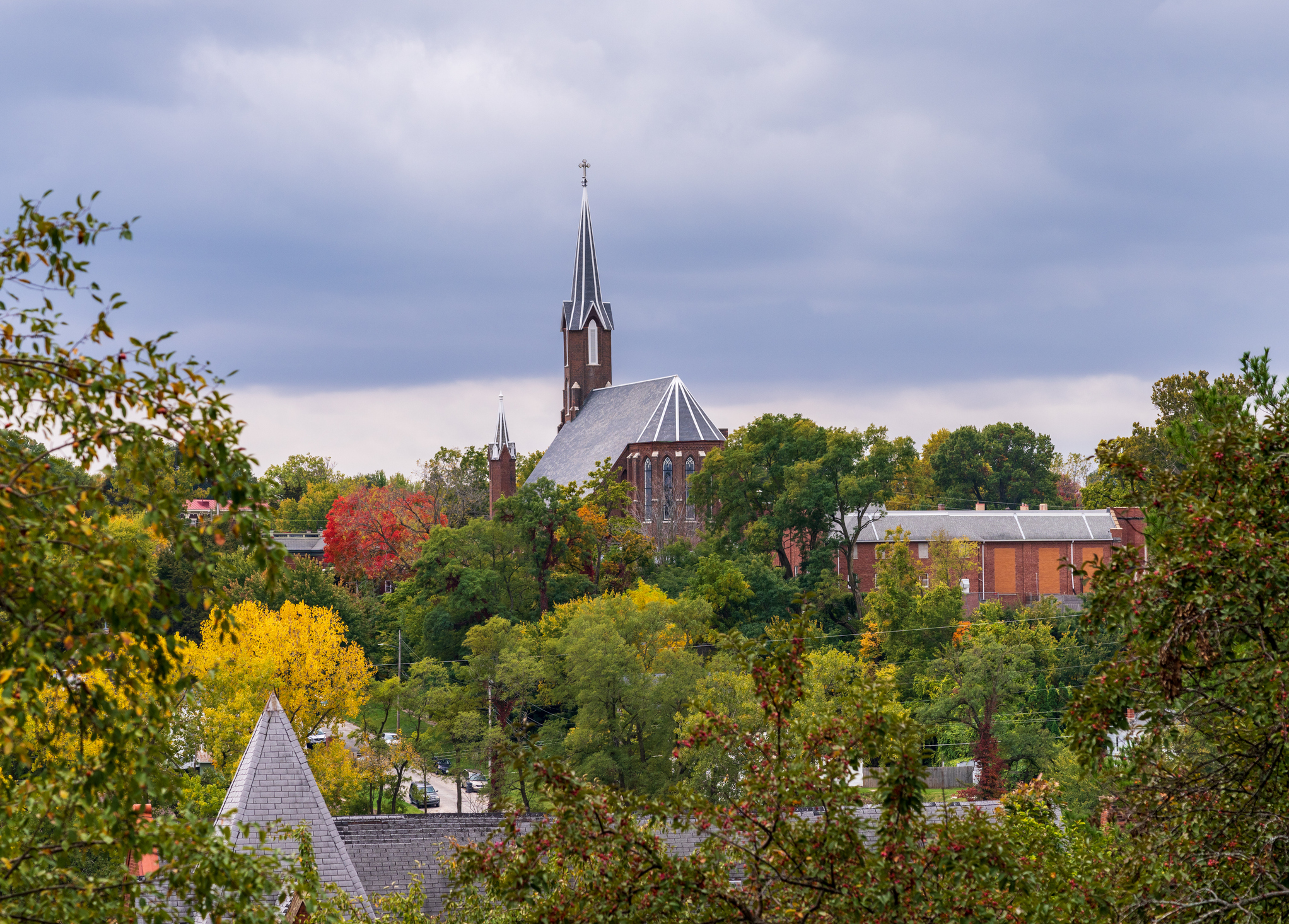 15 Cheapest Small Towns to Live In
15 Cheapest Small Towns to Live InThe cheapest small towns might not be for everyone, but their charms can make them the best places to live for plenty of folks.
-
 15 Reasons You'll Regret an RV in Retirement
15 Reasons You'll Regret an RV in RetirementMaking Your Money Last Here's why you might regret an RV in retirement. RV-savvy retirees talk about the downsides of spending retirement in a motorhome, travel trailer, fifth wheel, or other recreational vehicle.
-
 The 24 Cheapest Places To Retire in the US
The 24 Cheapest Places To Retire in the USWhen you're trying to balance a fixed income with an enjoyable retirement, the cost of living is a crucial factor to consider. Is your city the best?
-
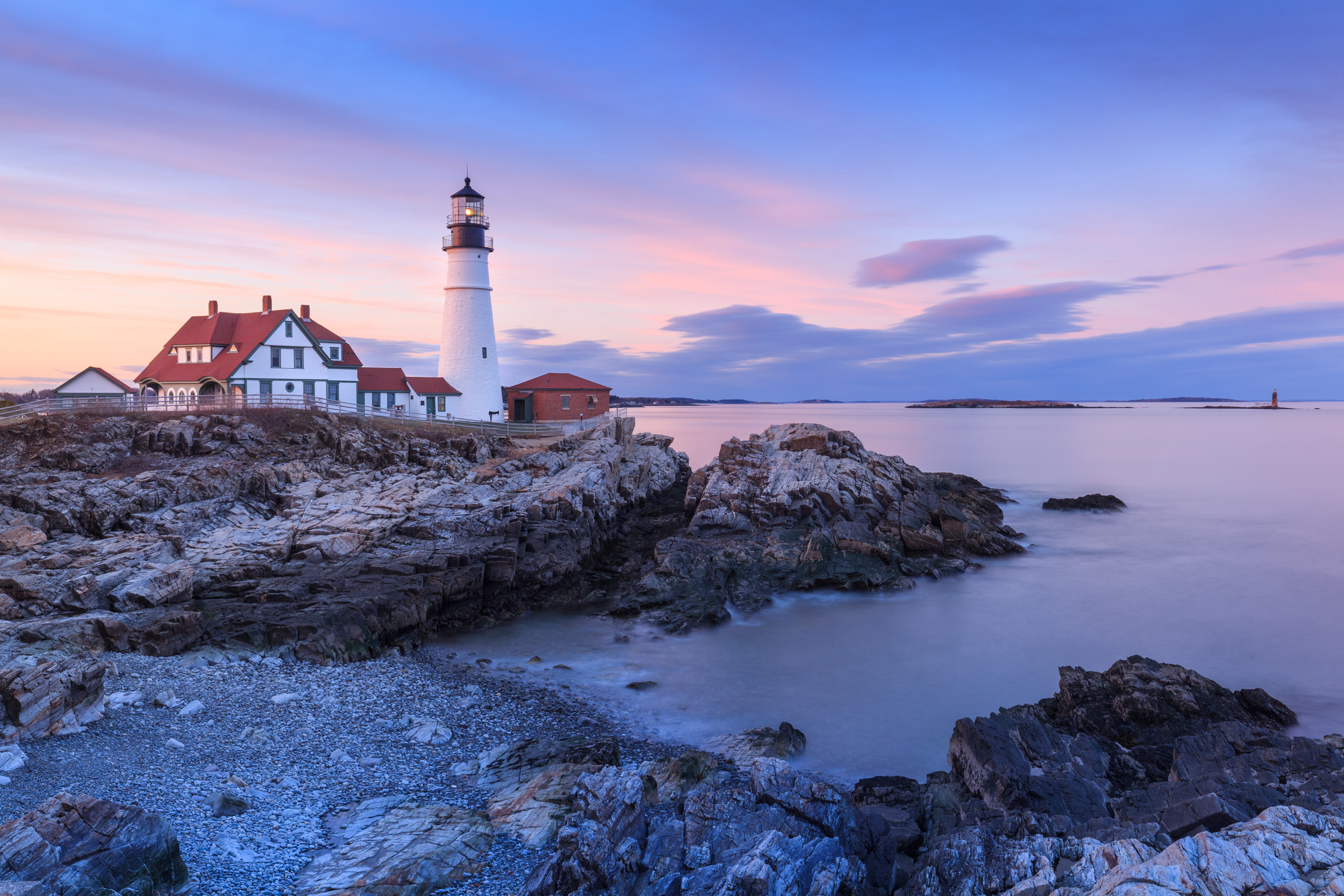 The Six Best Places to Retire in New England
The Six Best Places to Retire in New Englandplaces to live Thinking about a move to New England for retirement? Here are the best places to land for quality of life, affordability and other criteria.
-
 Estate Planning Checklist: 13 Smart Moves
Estate Planning Checklist: 13 Smart Movesretirement Follow this estate planning checklist for you (and your heirs) to hold on to more of your hard-earned money.
